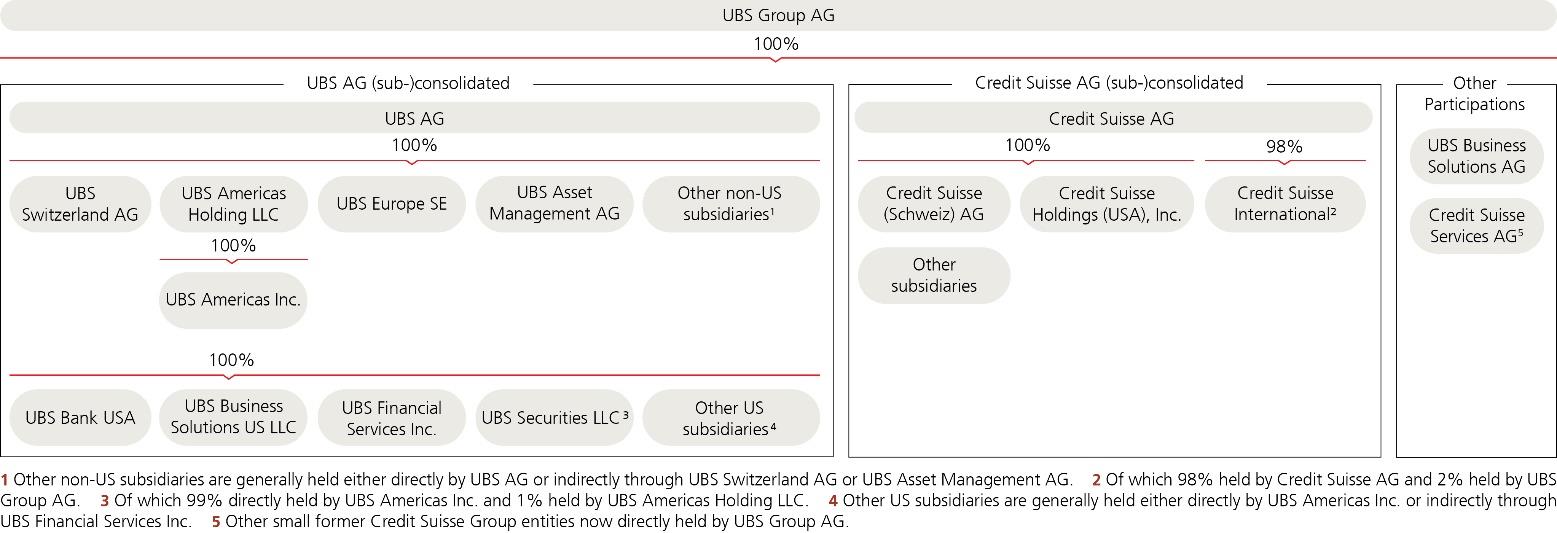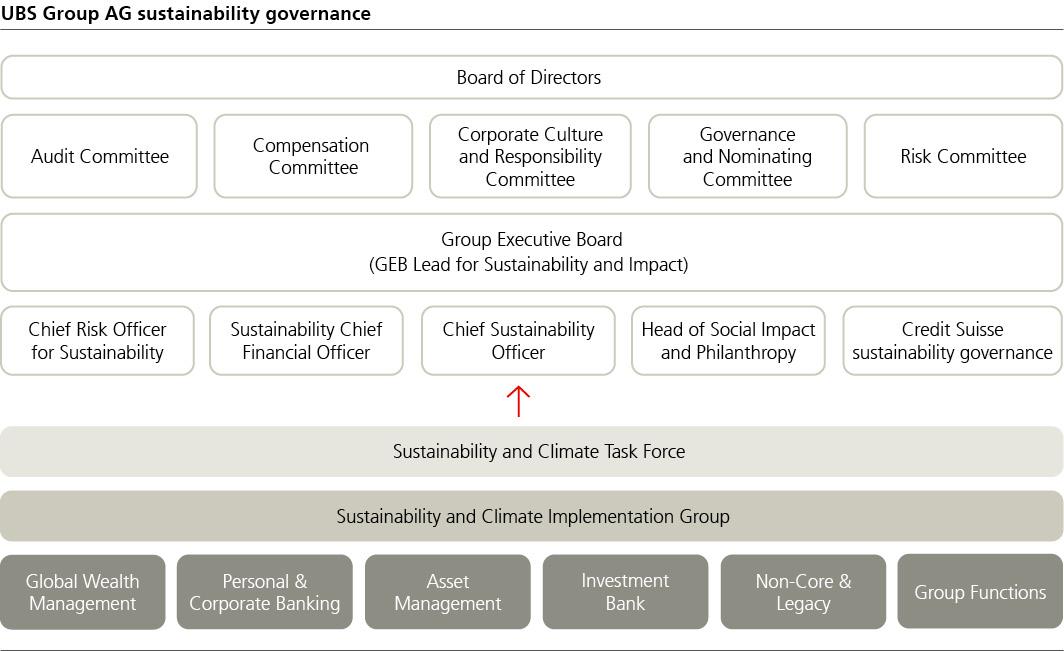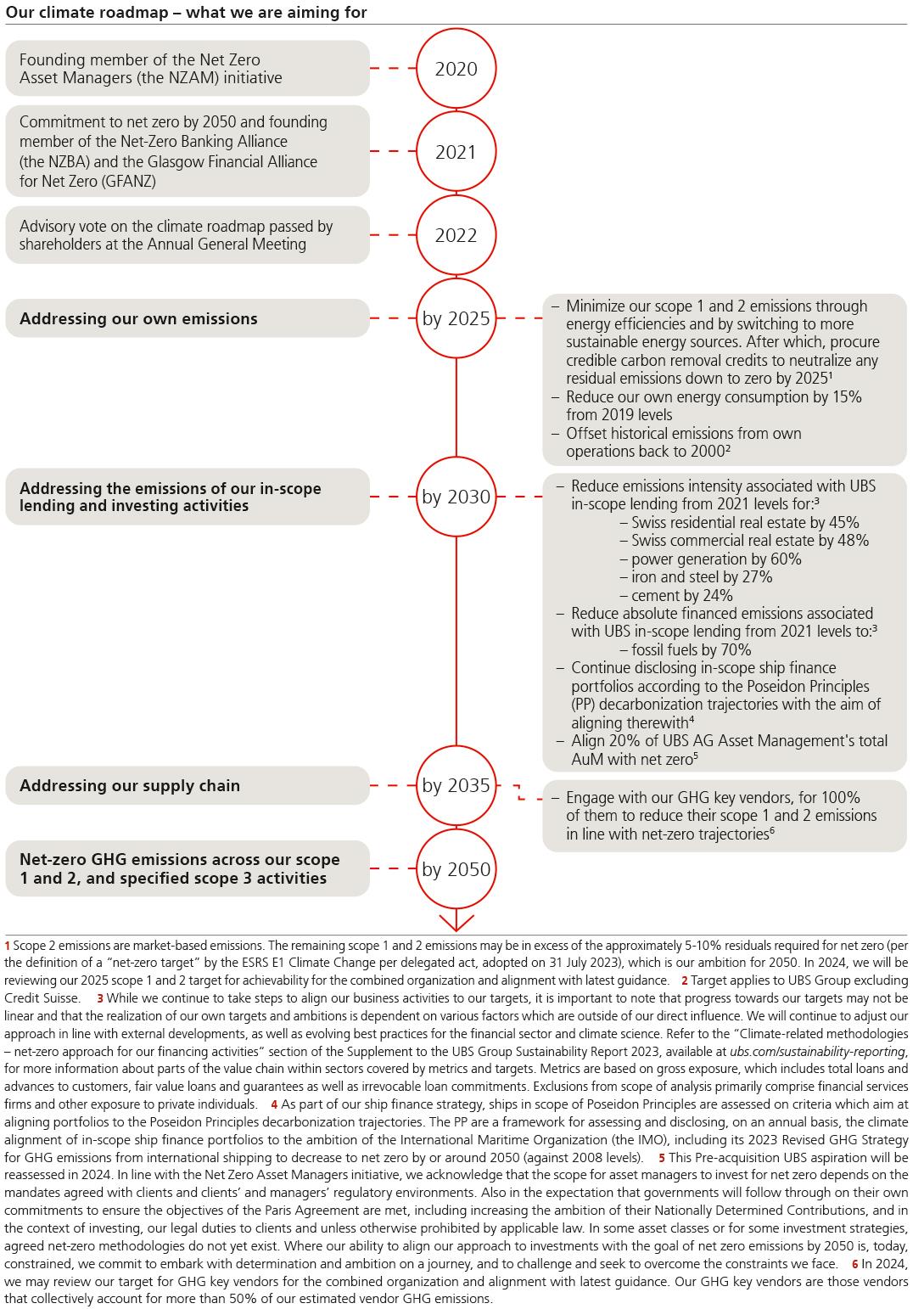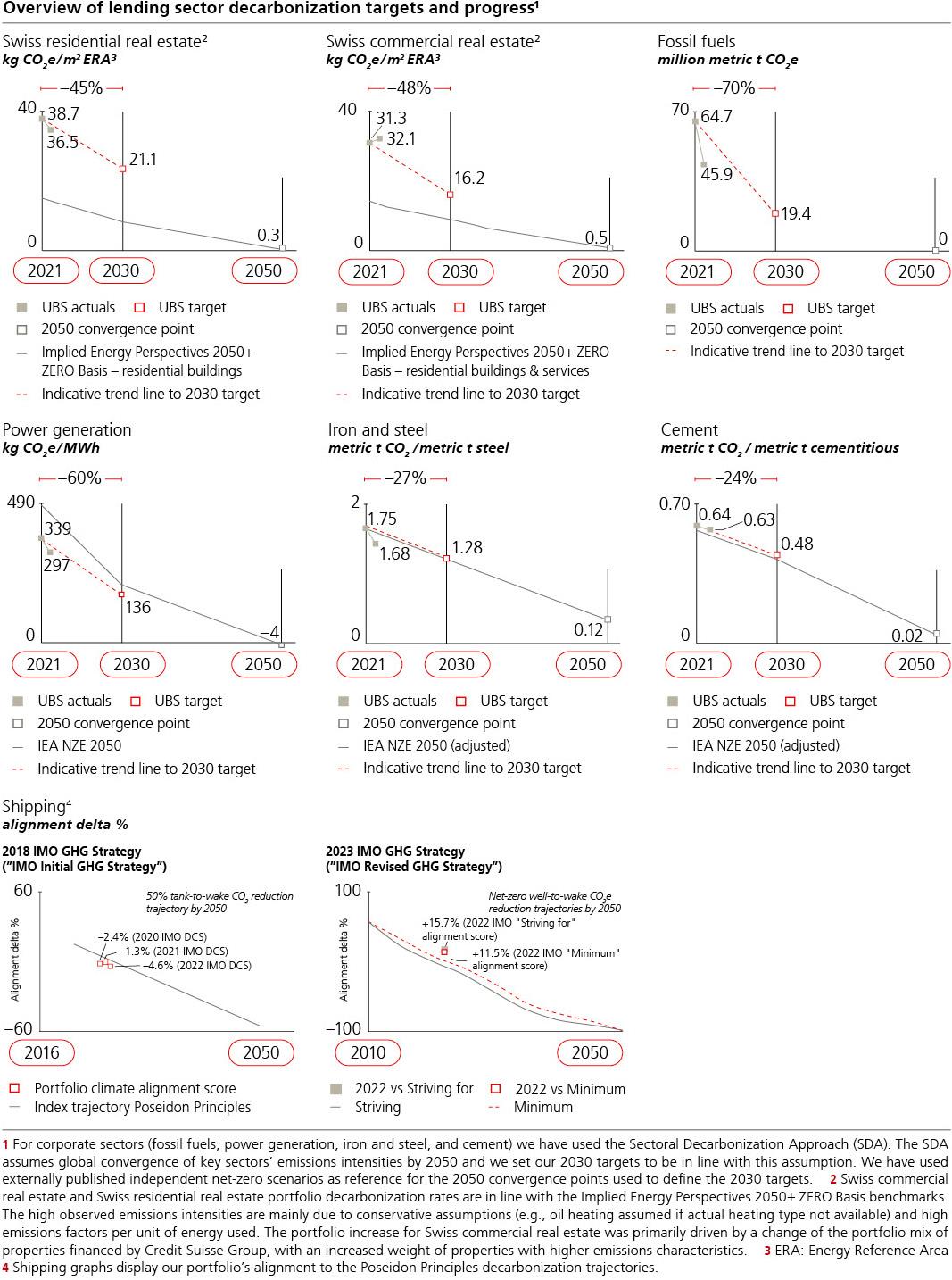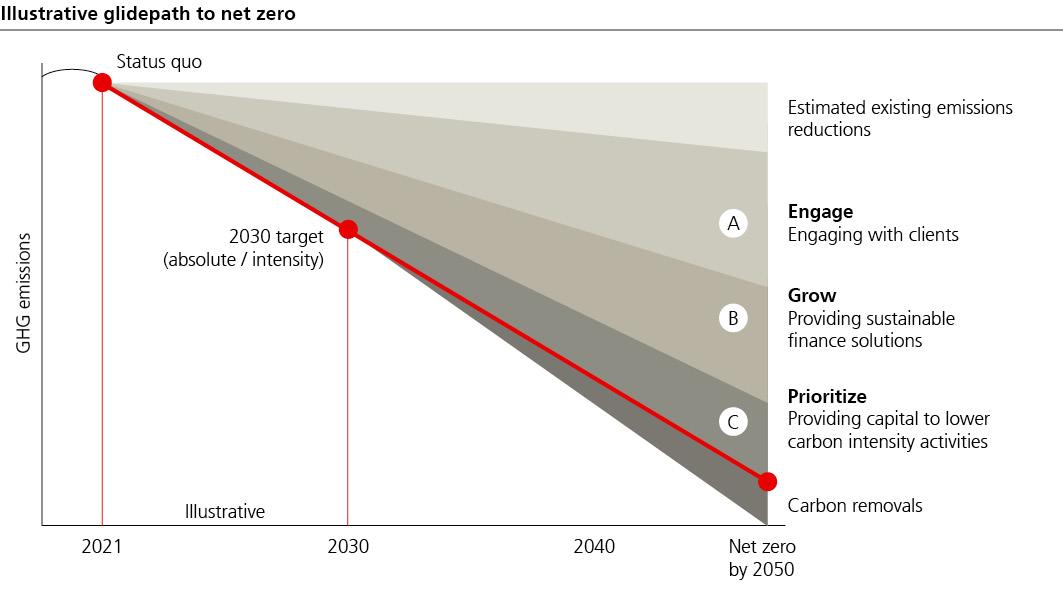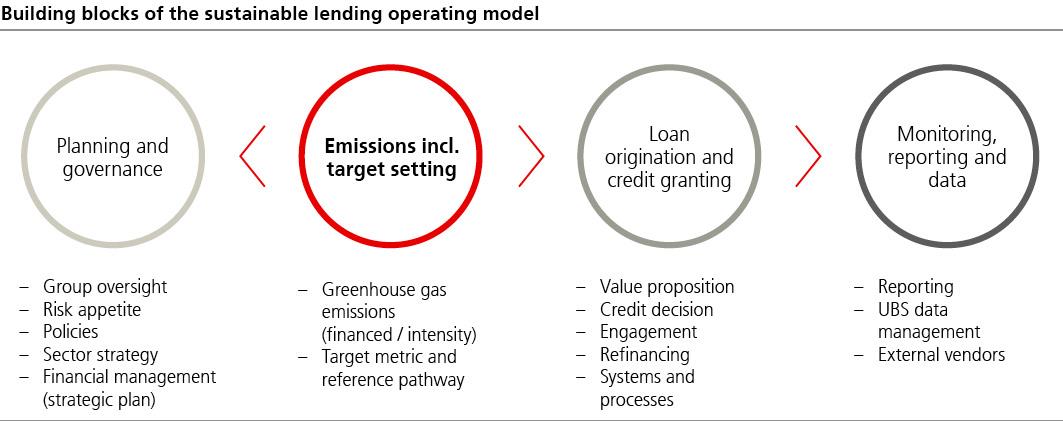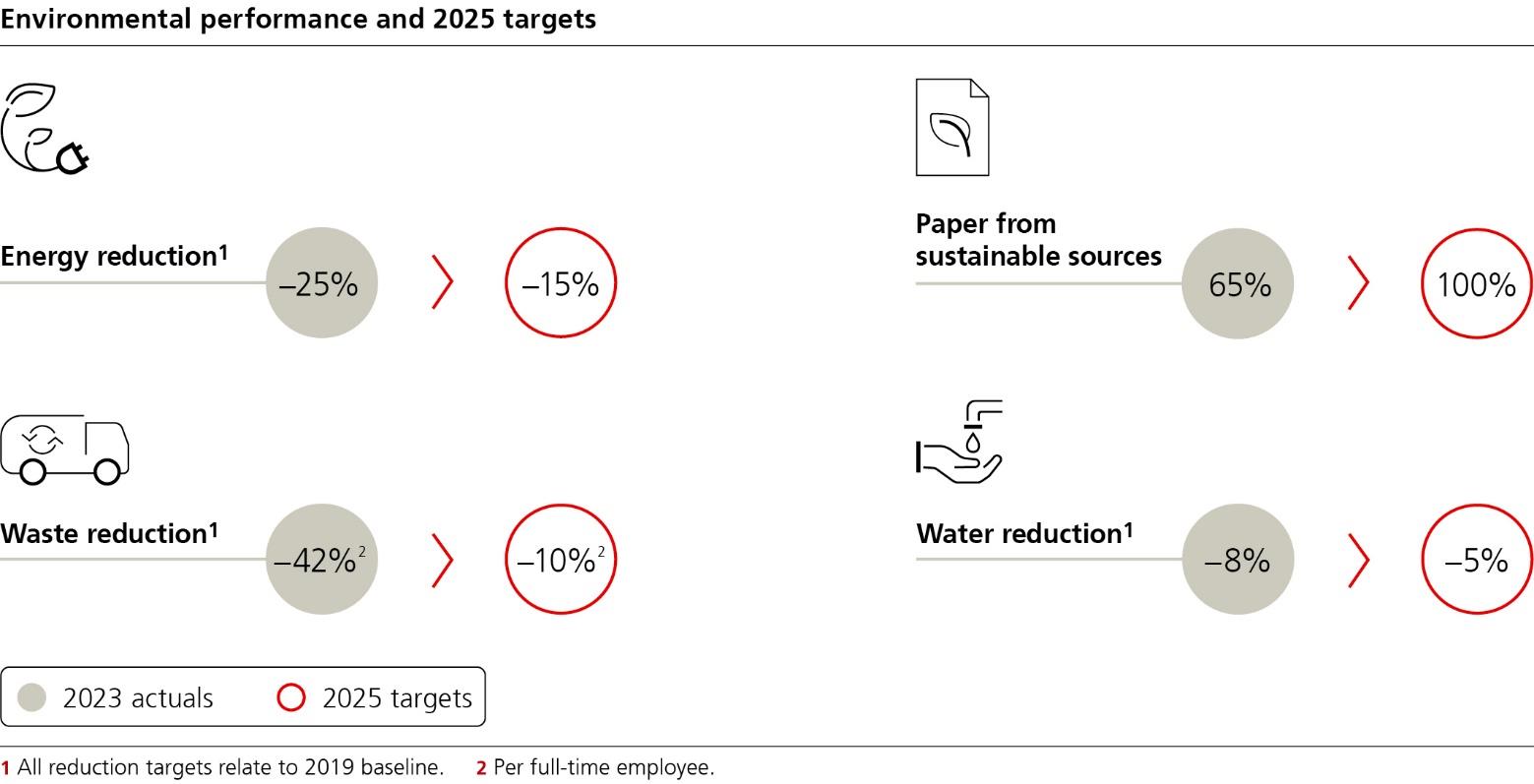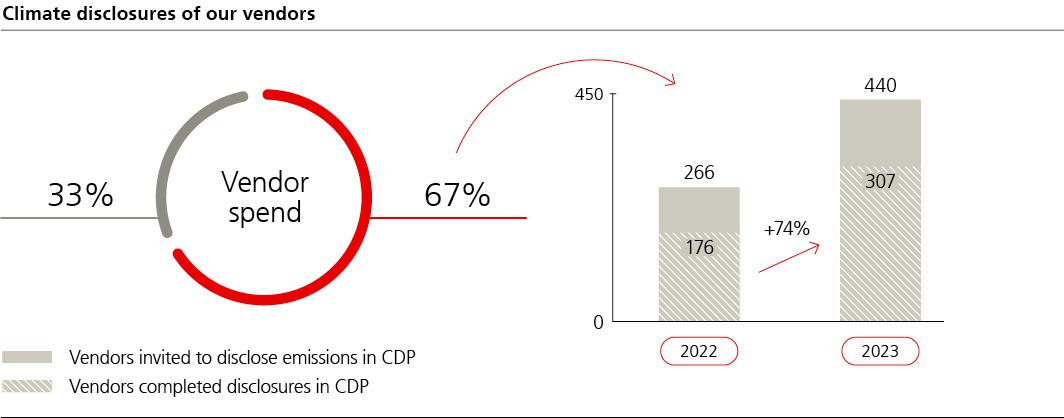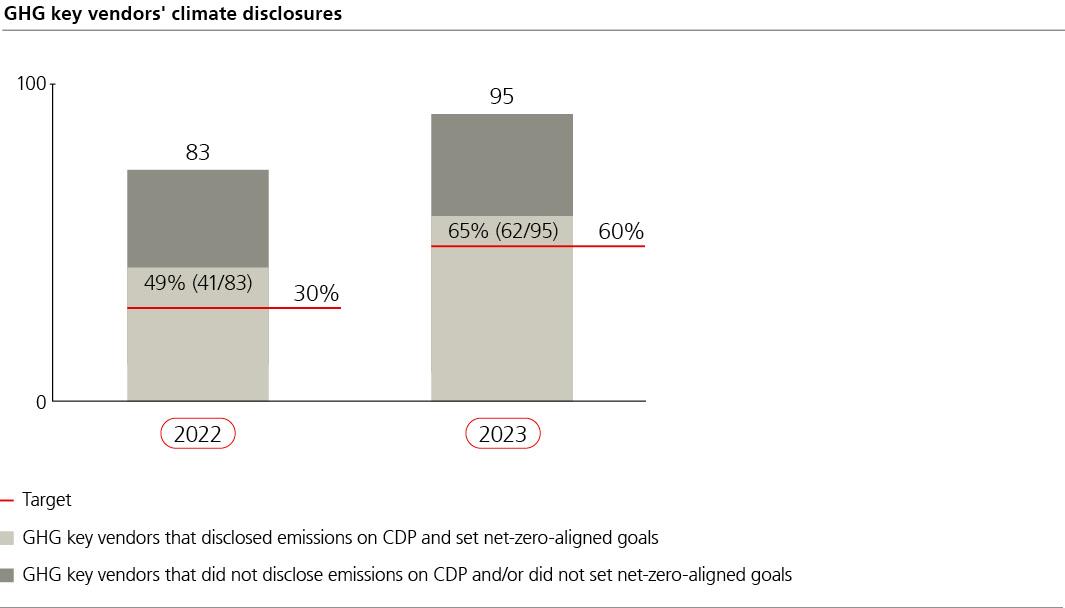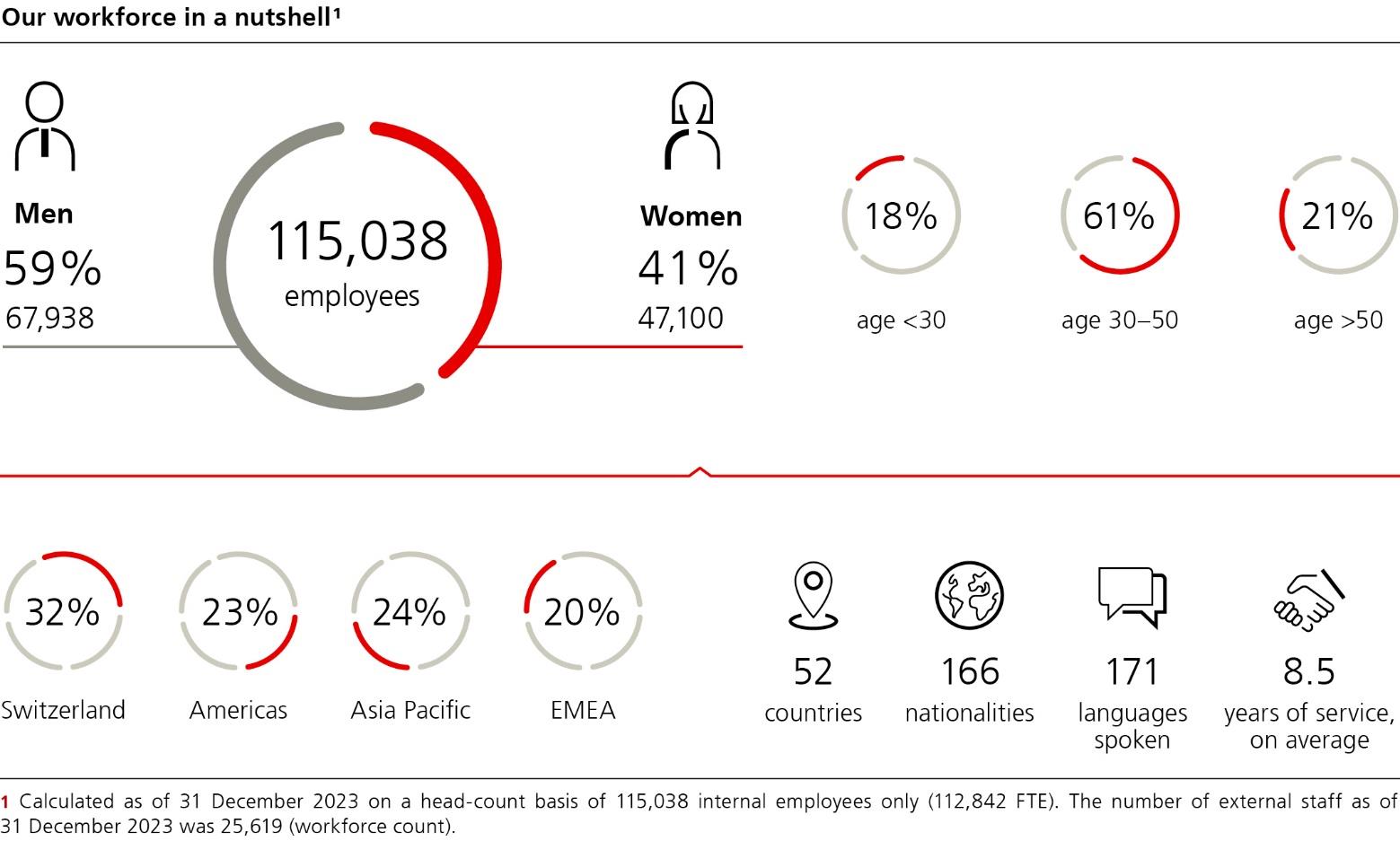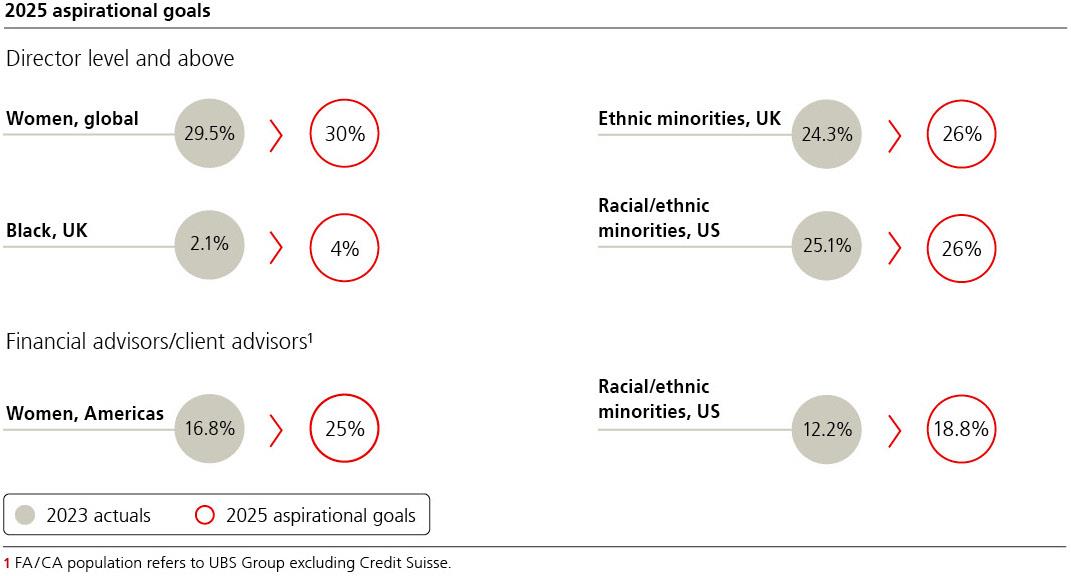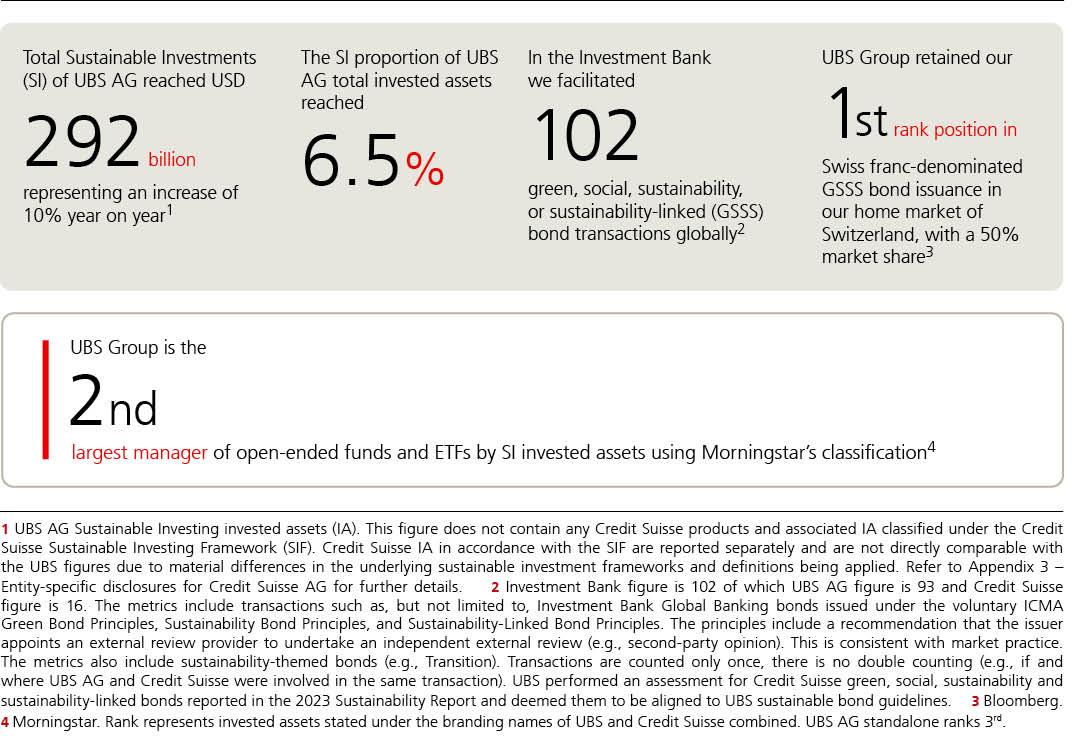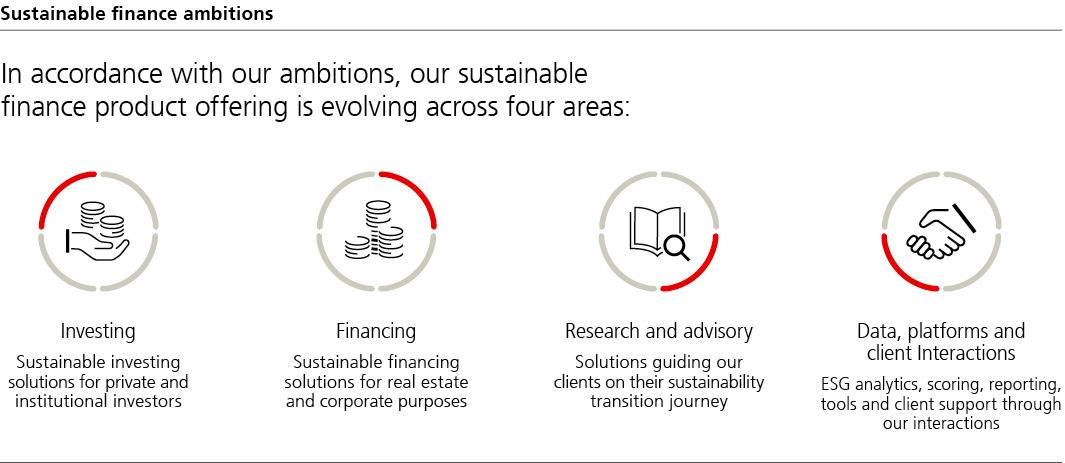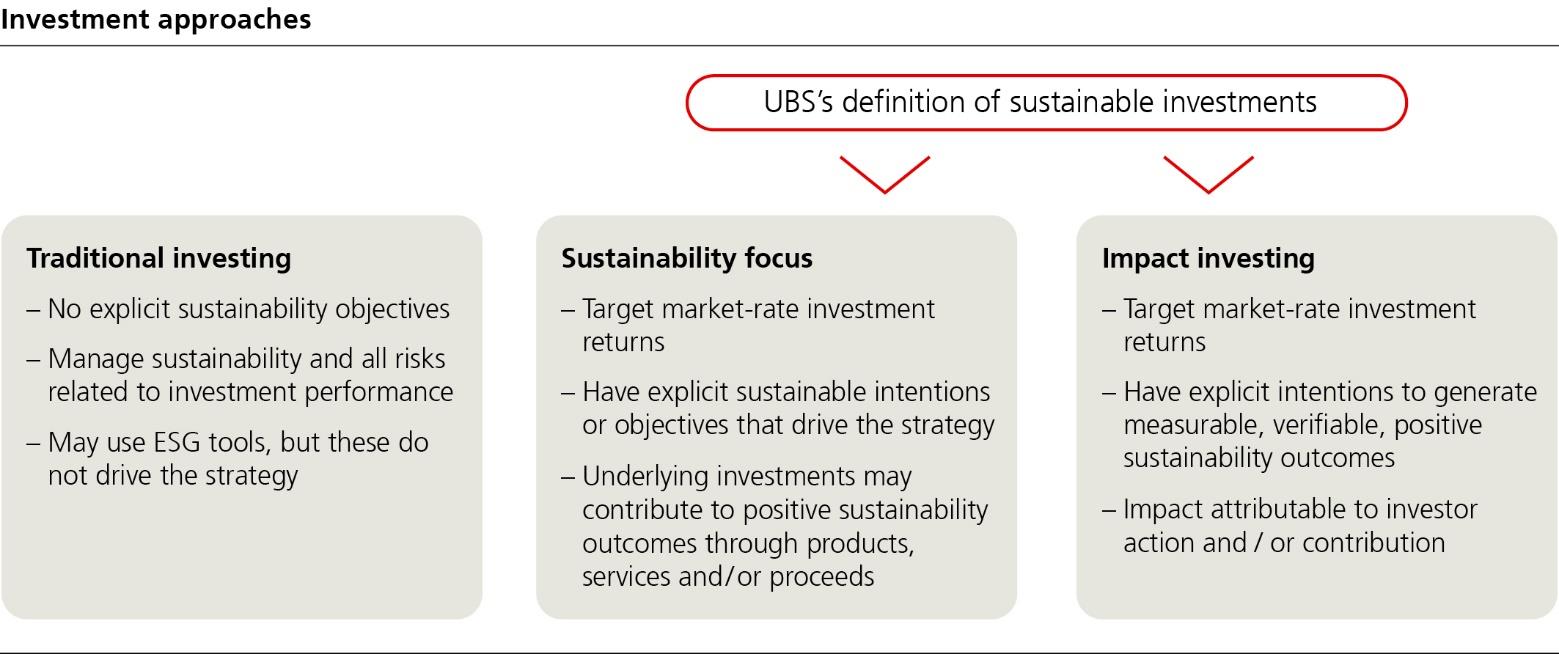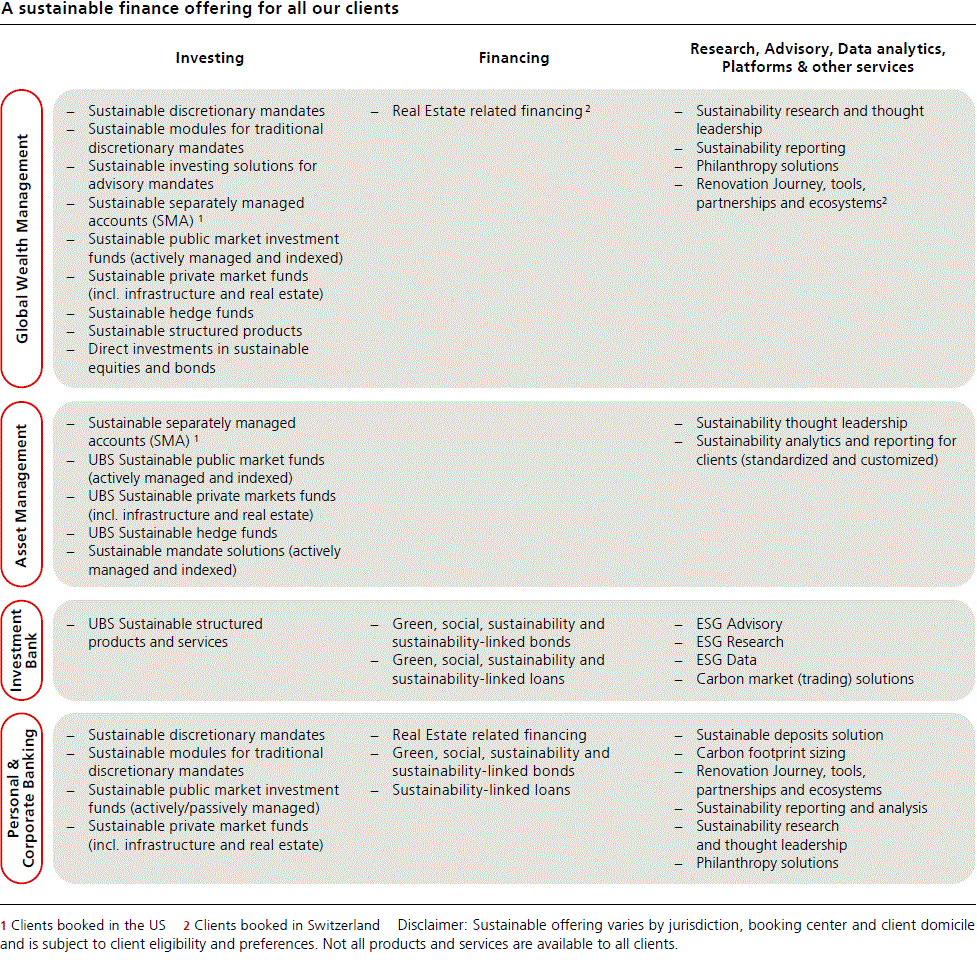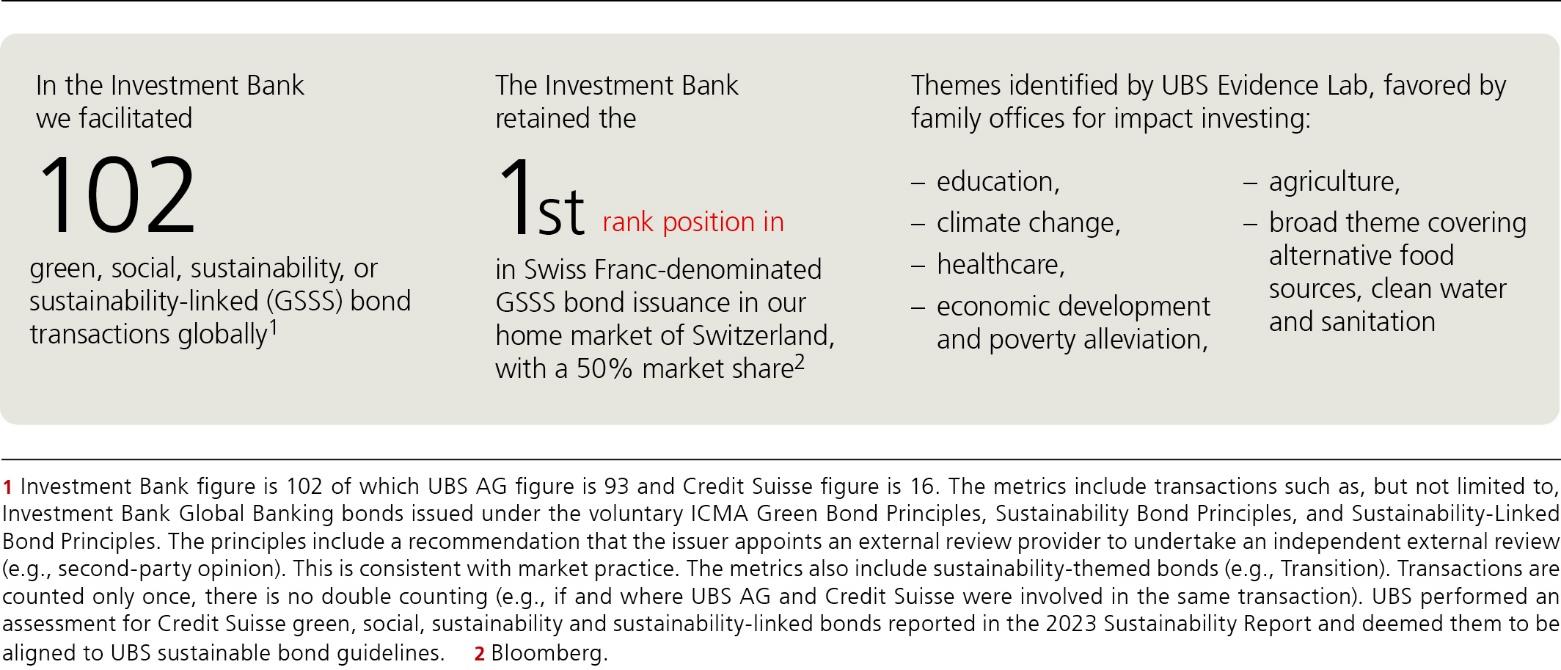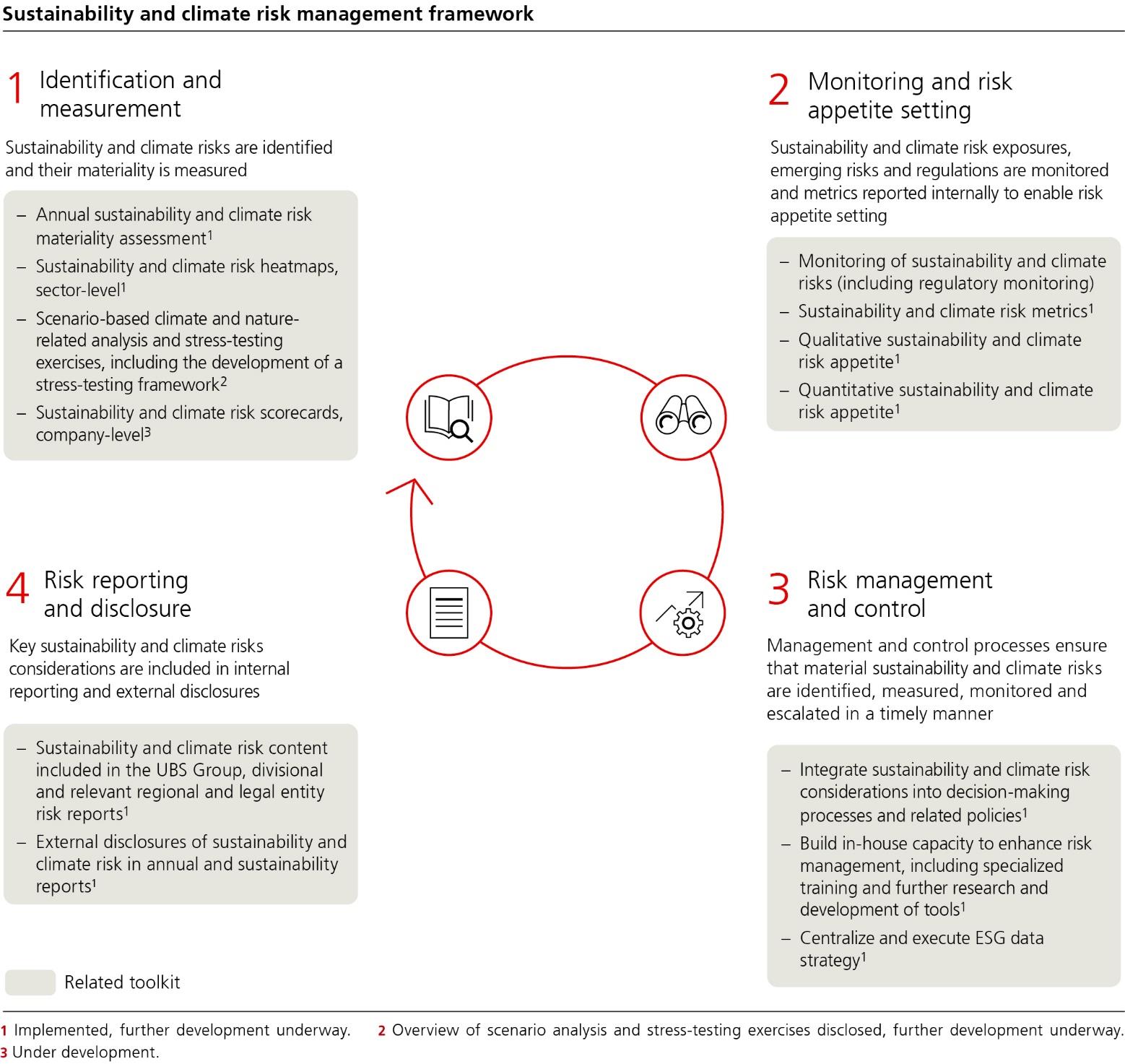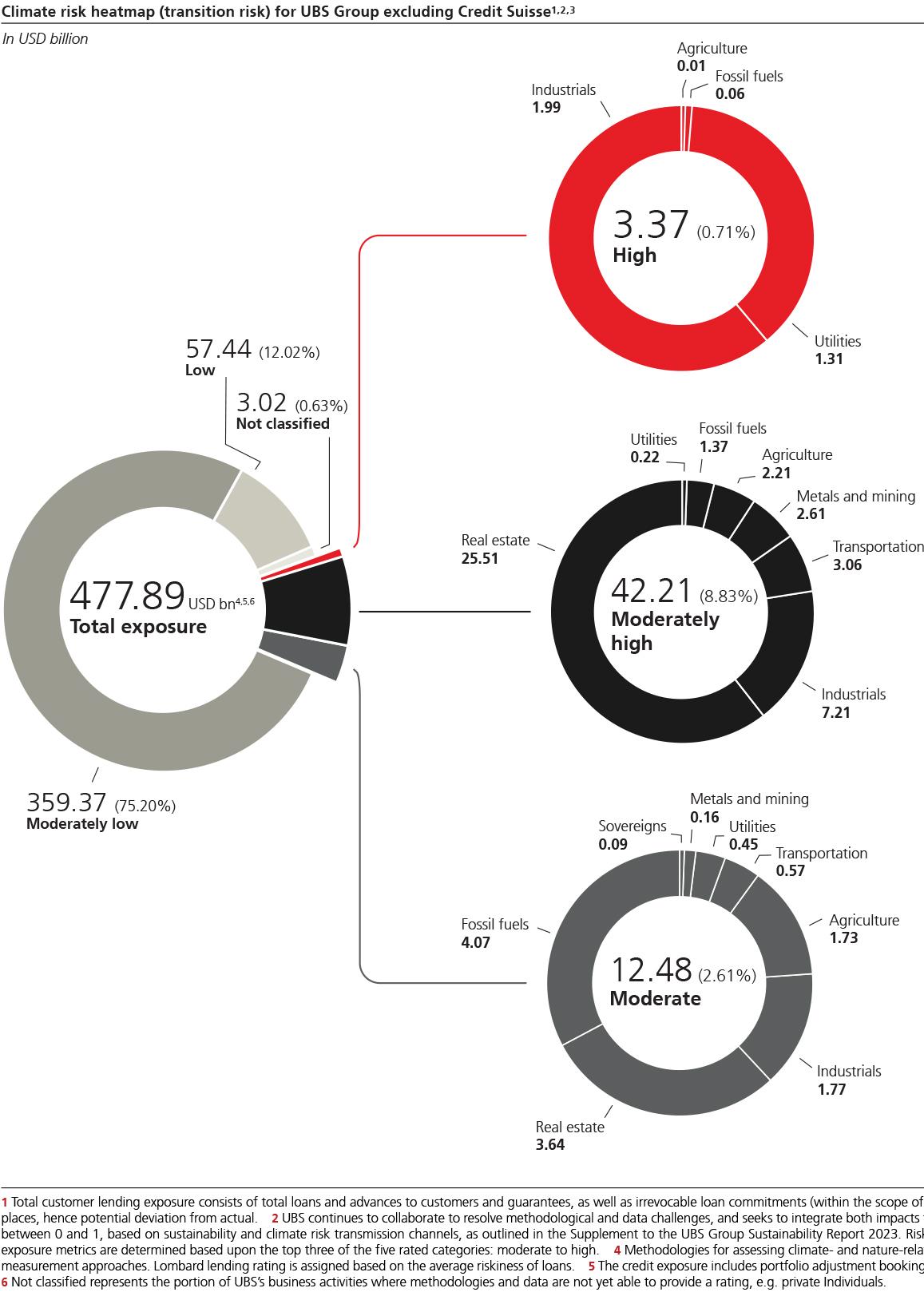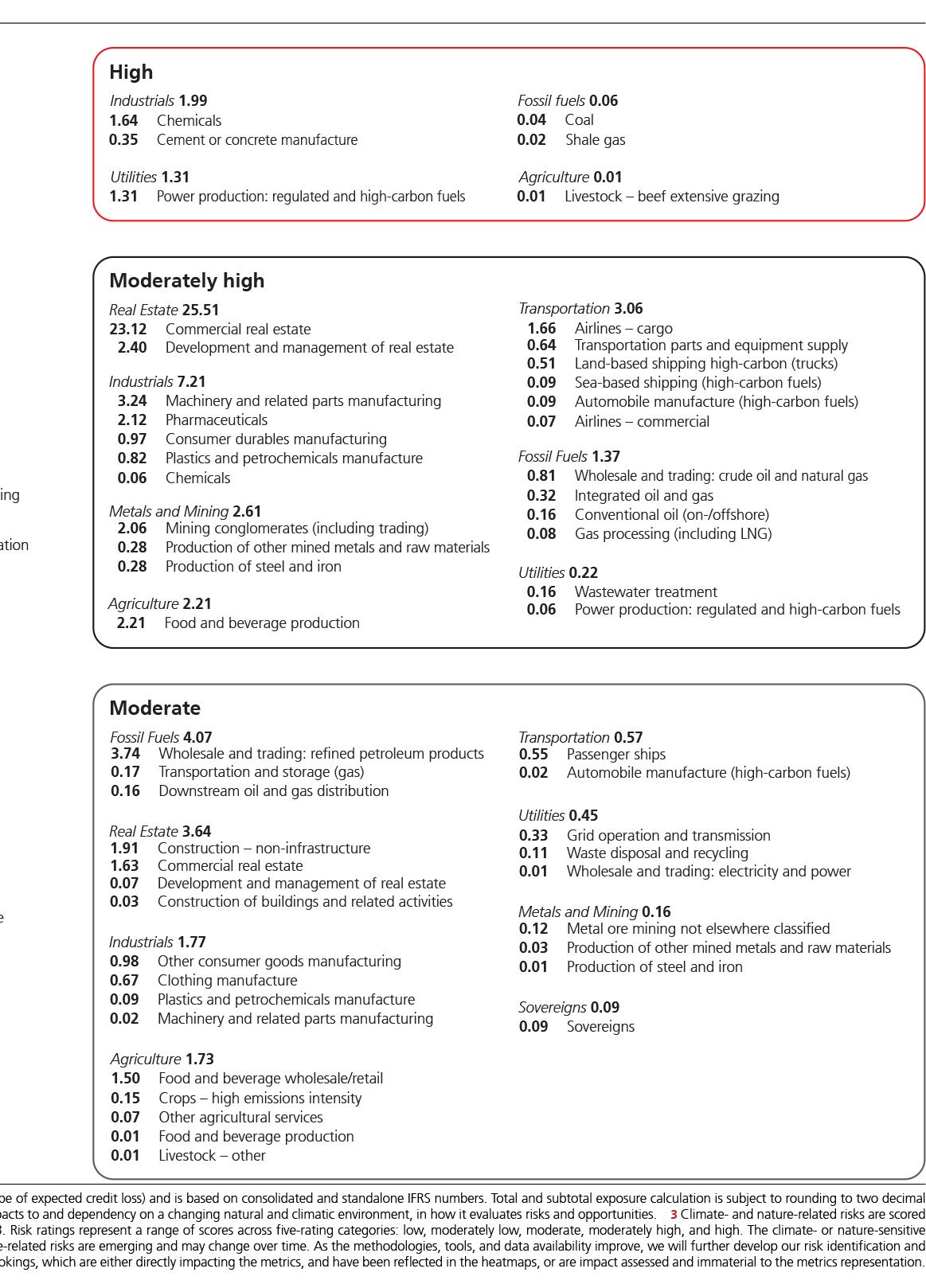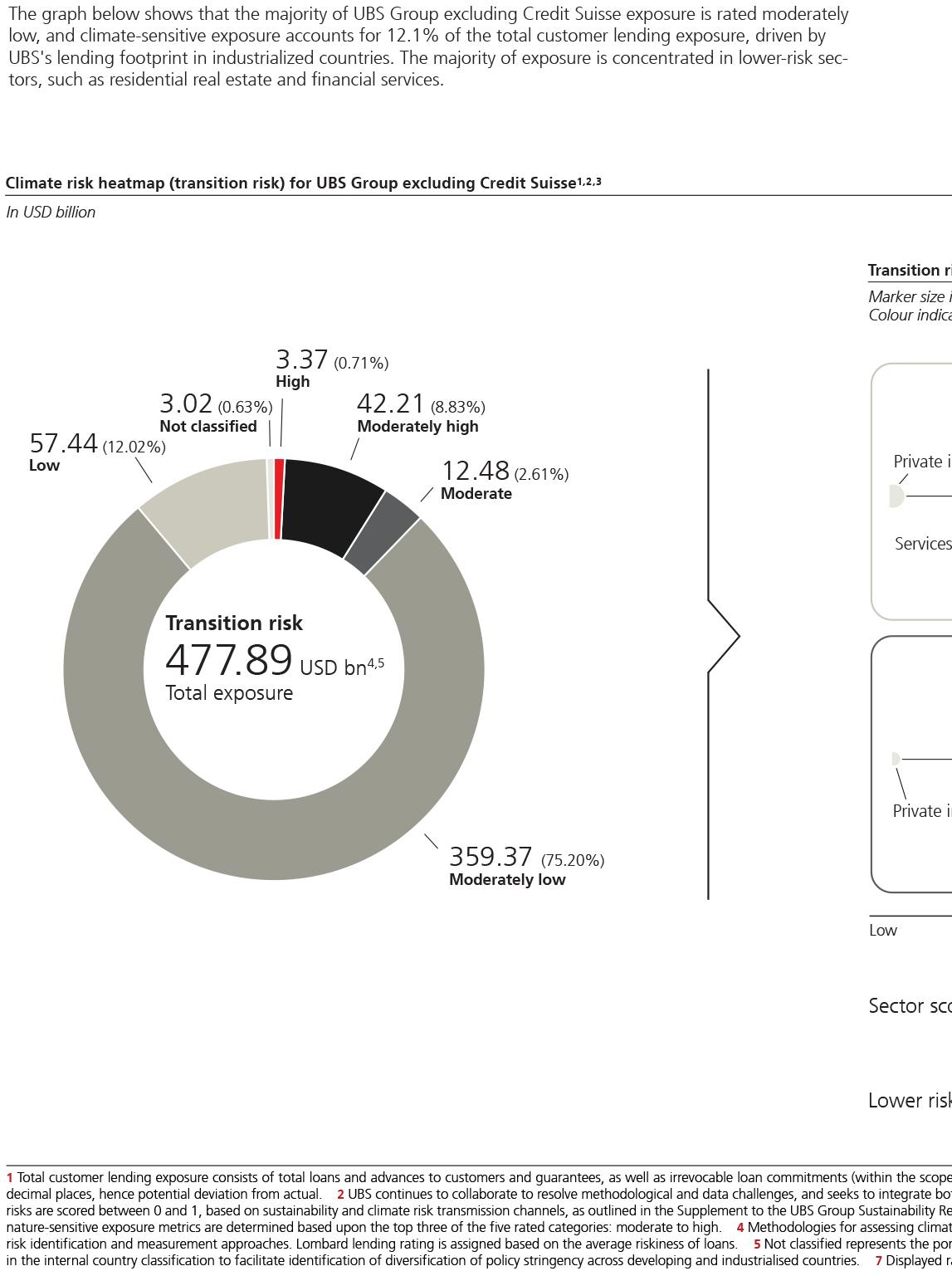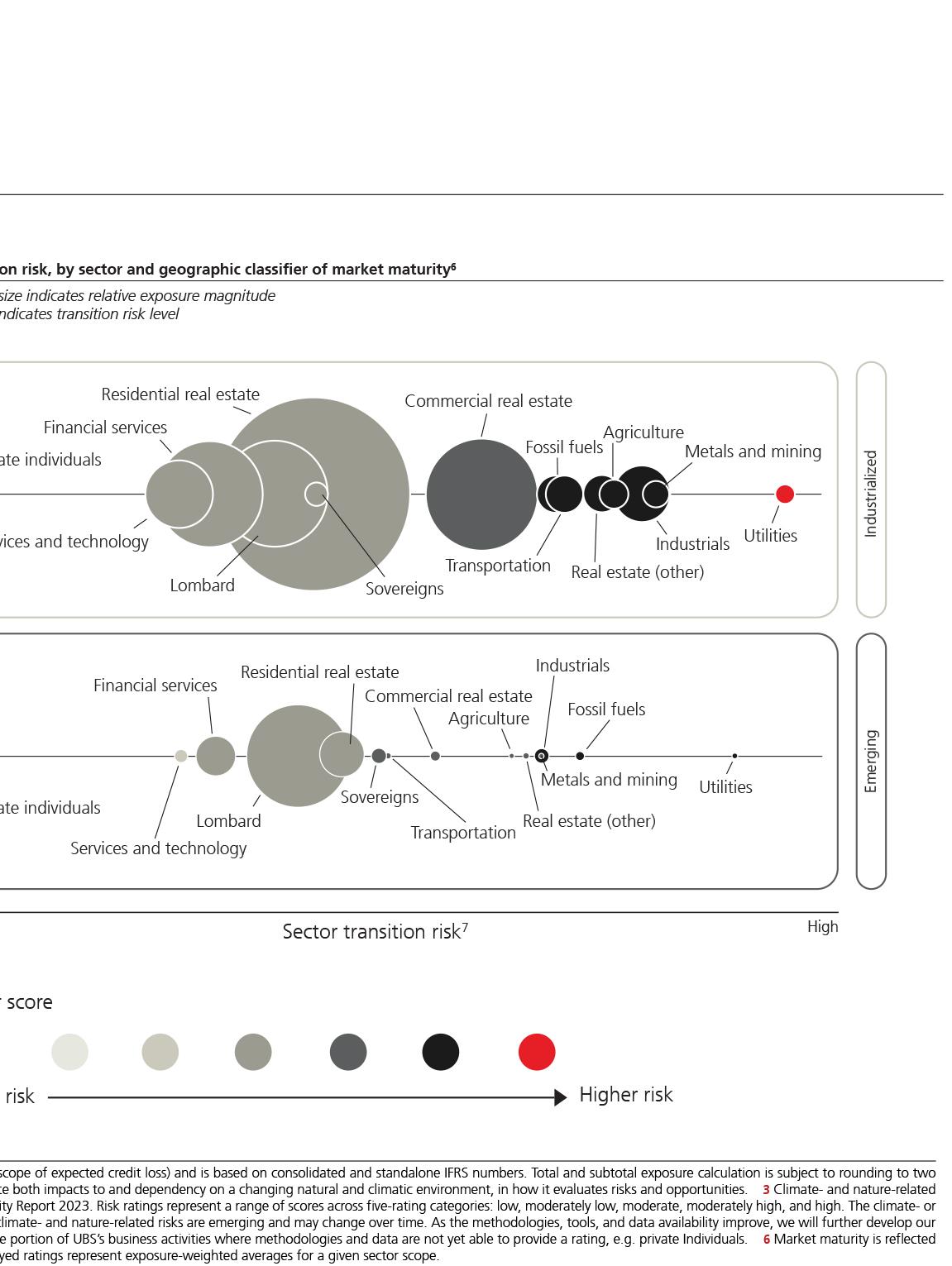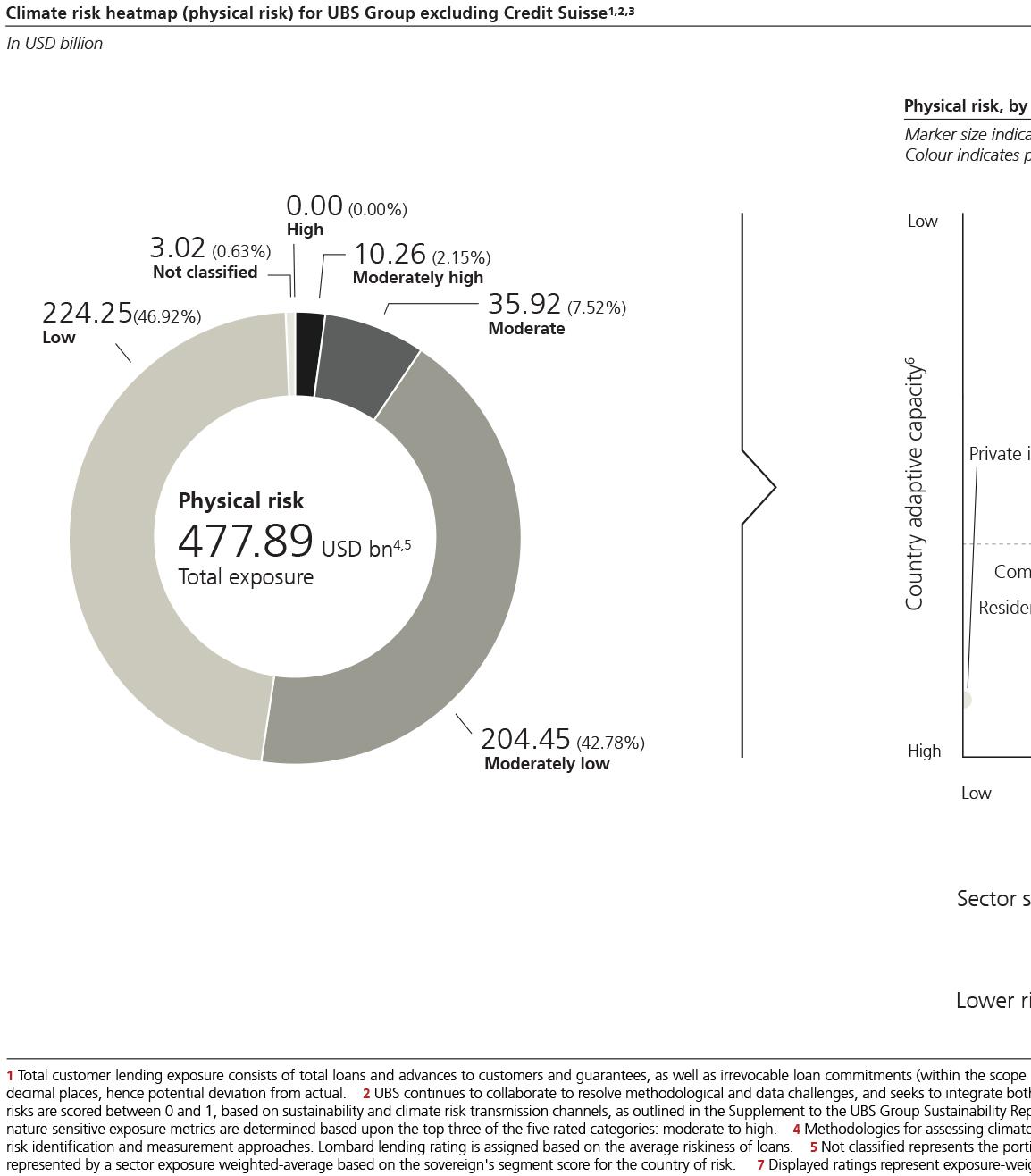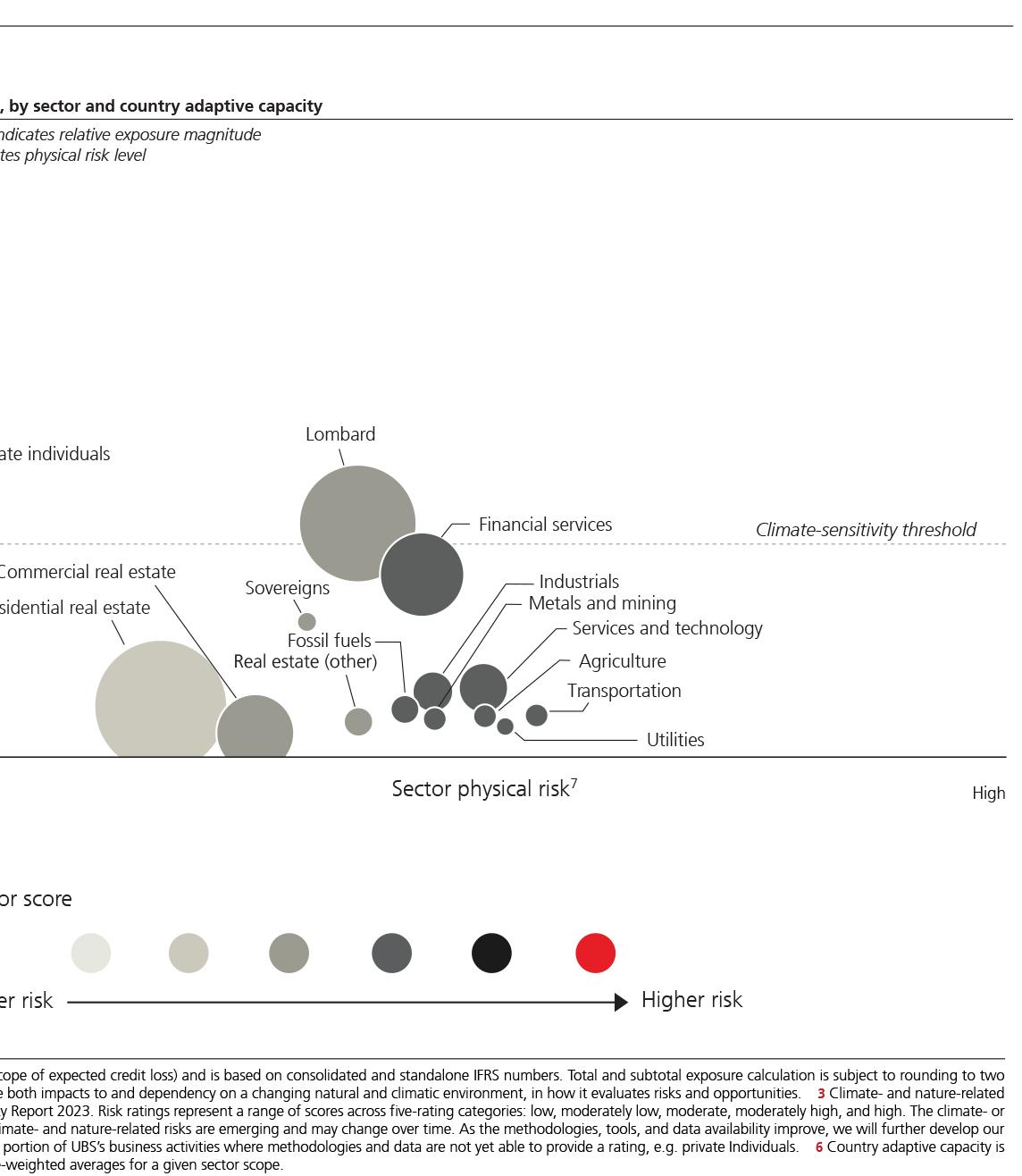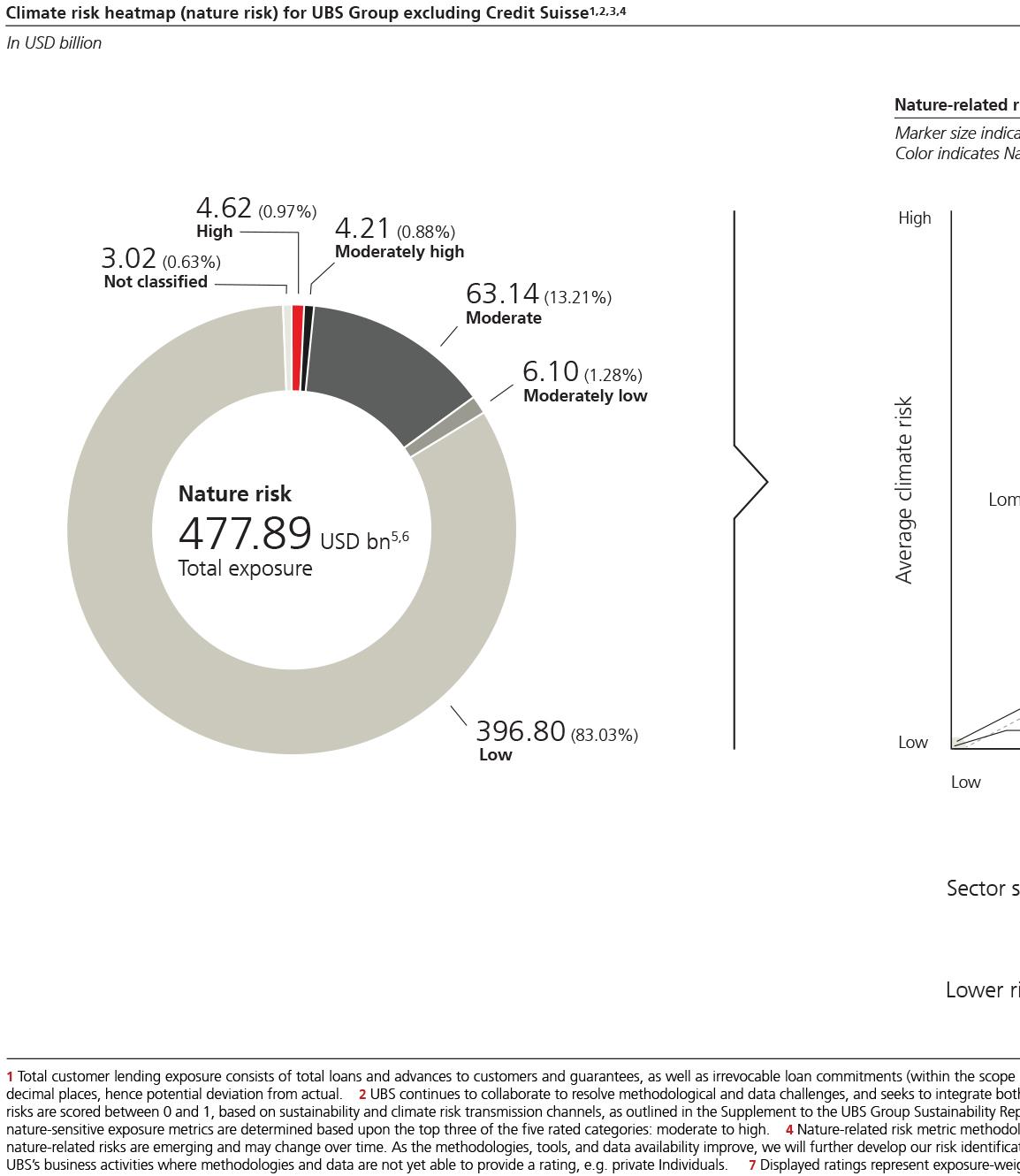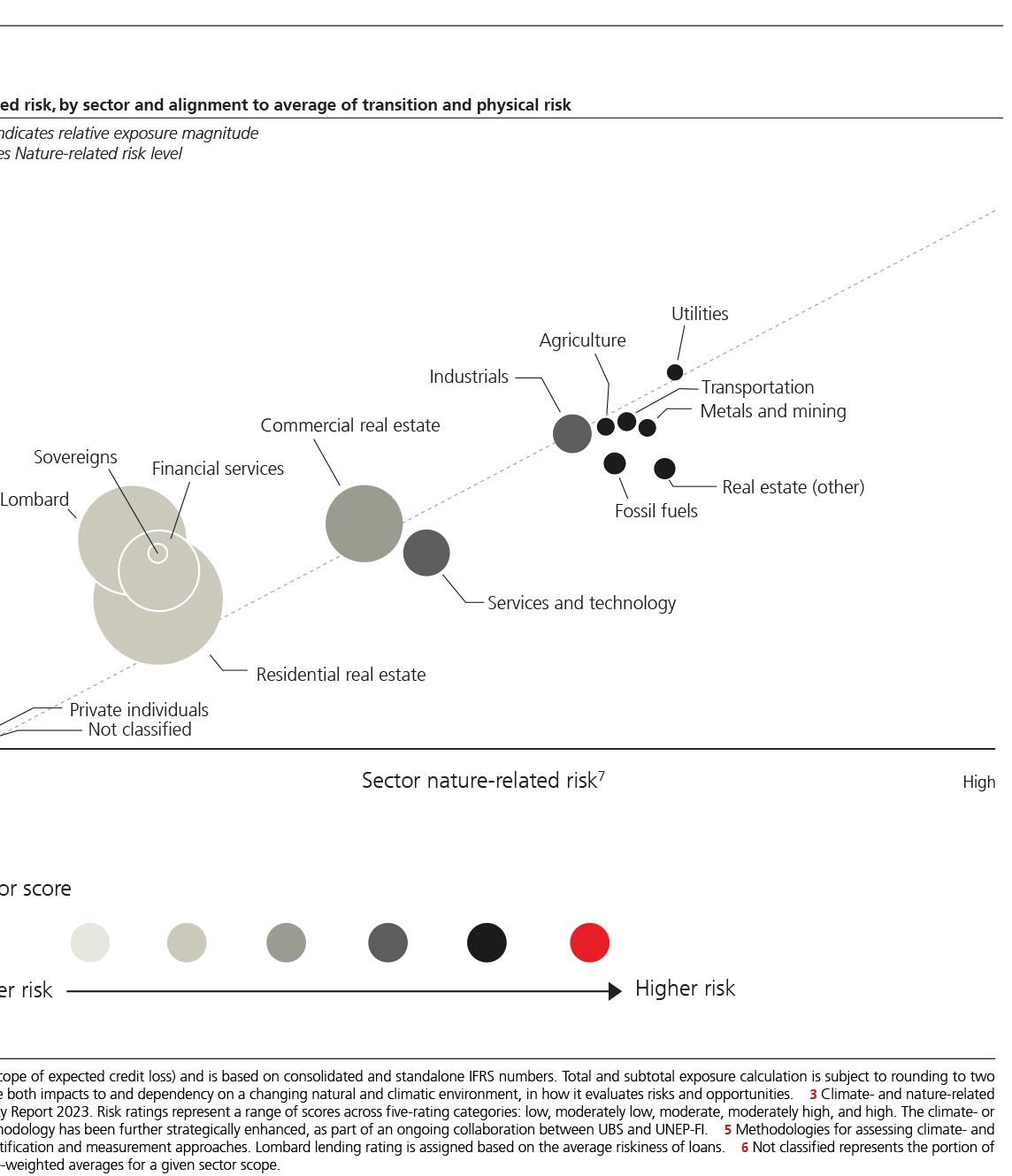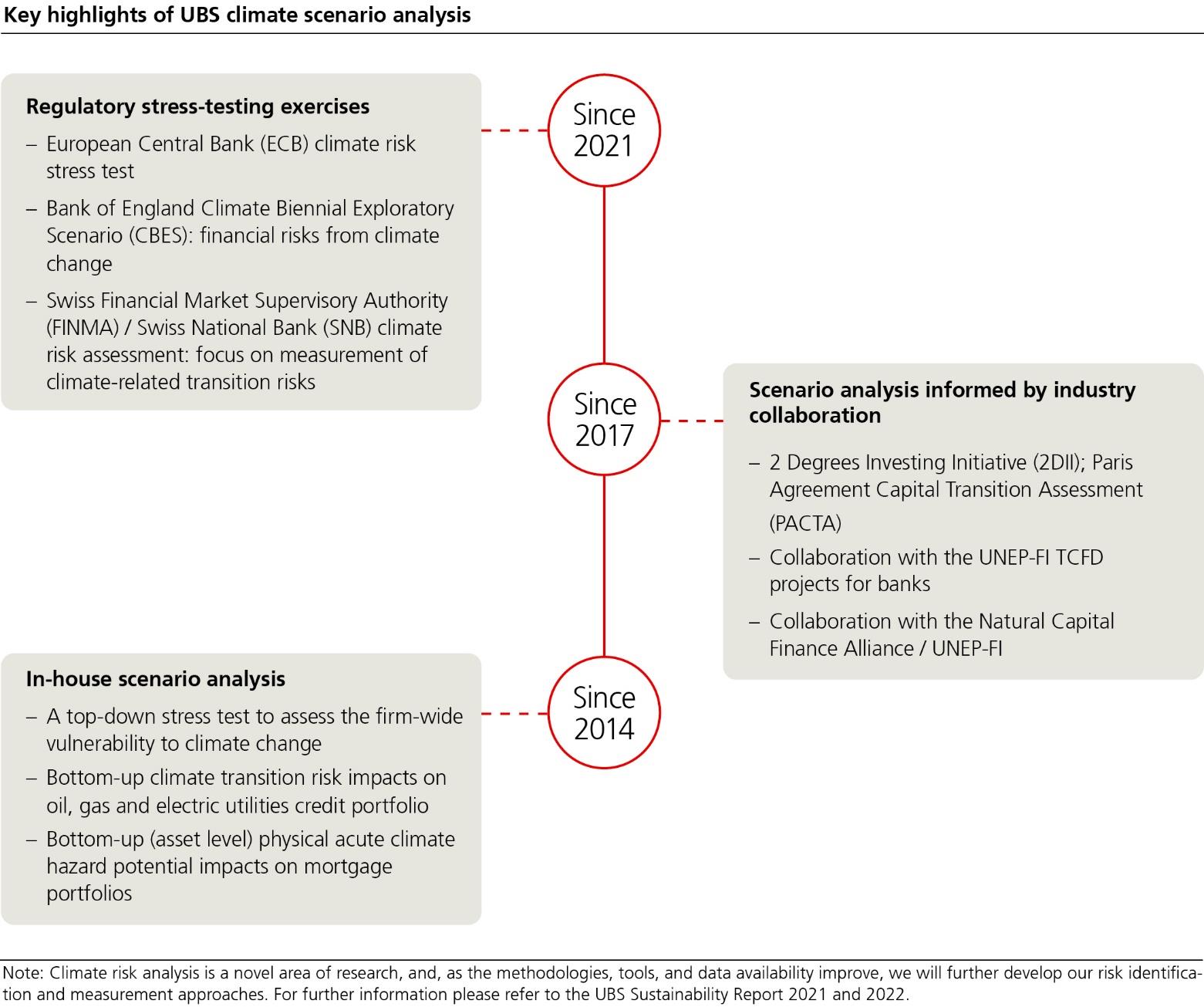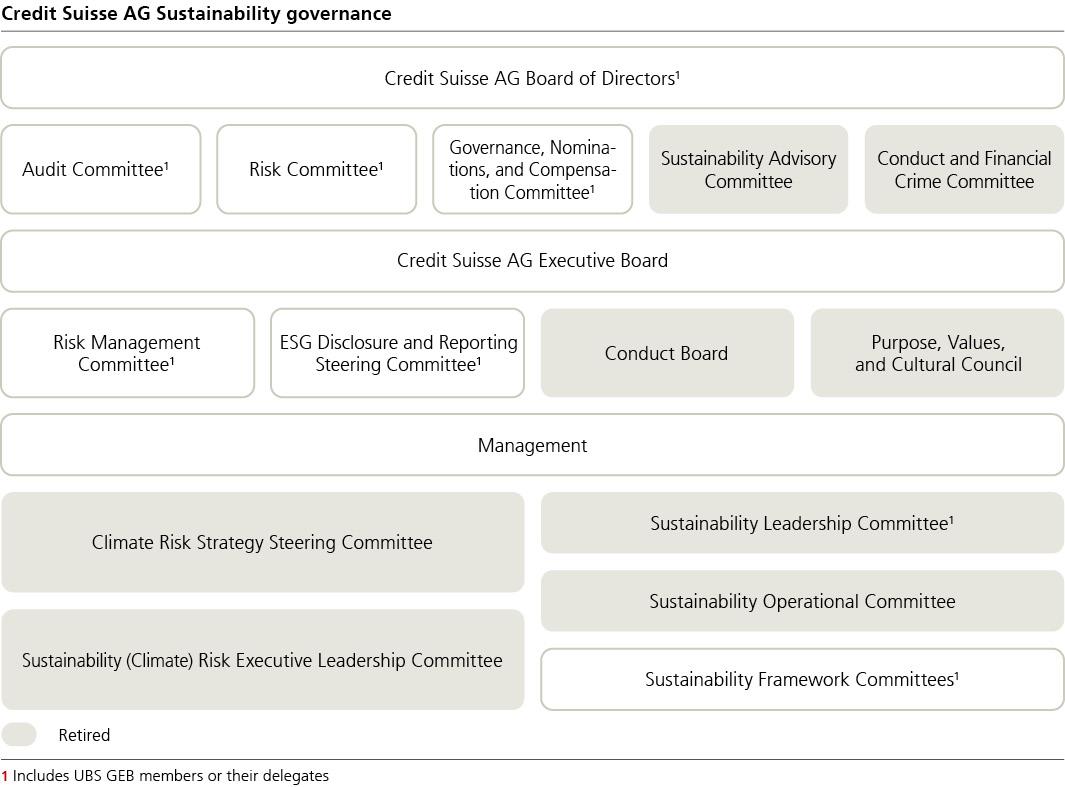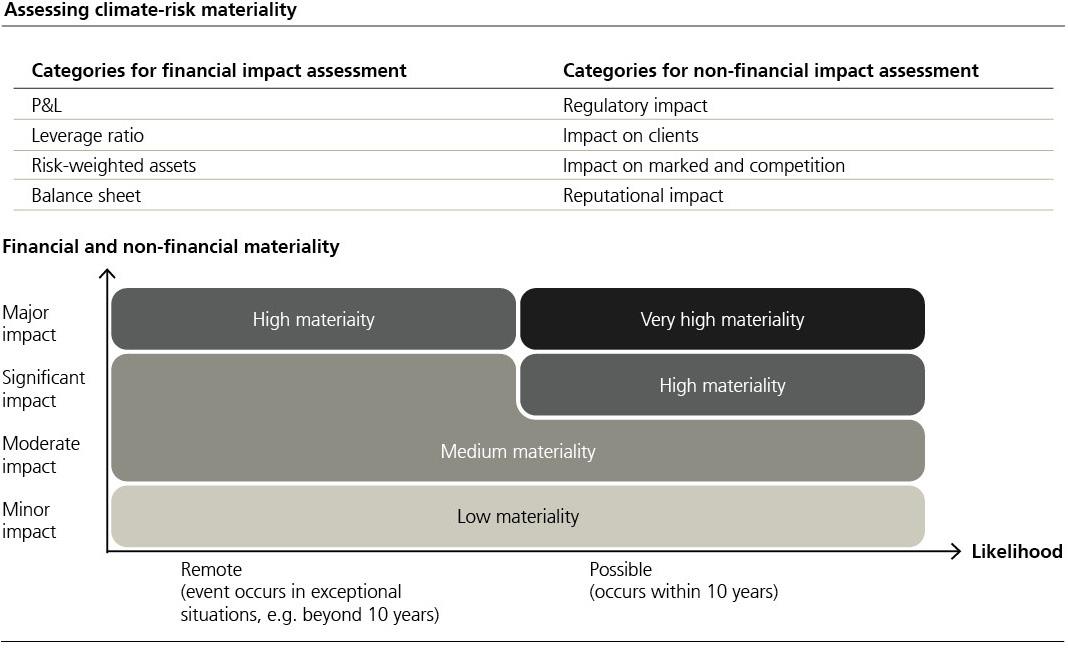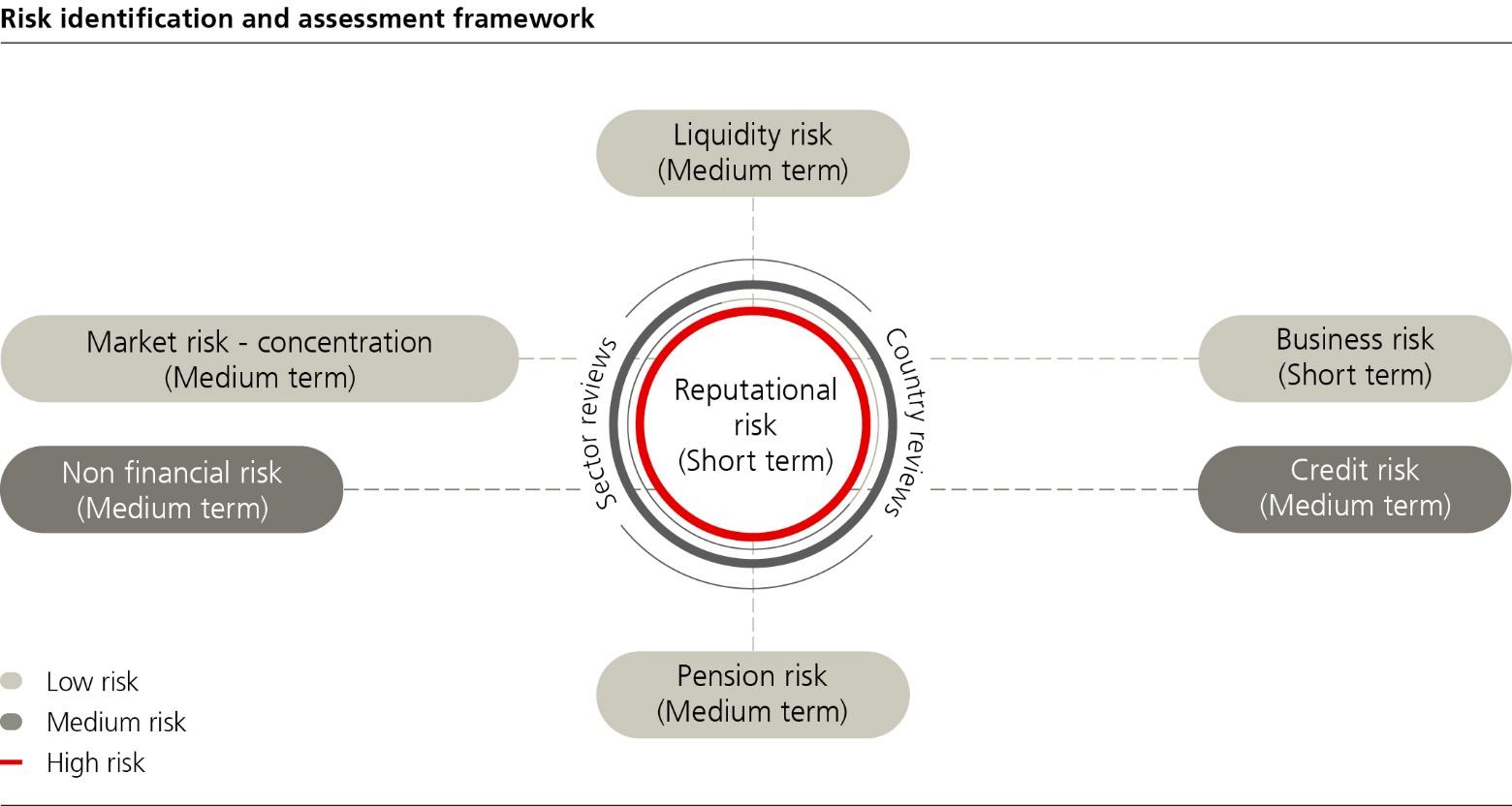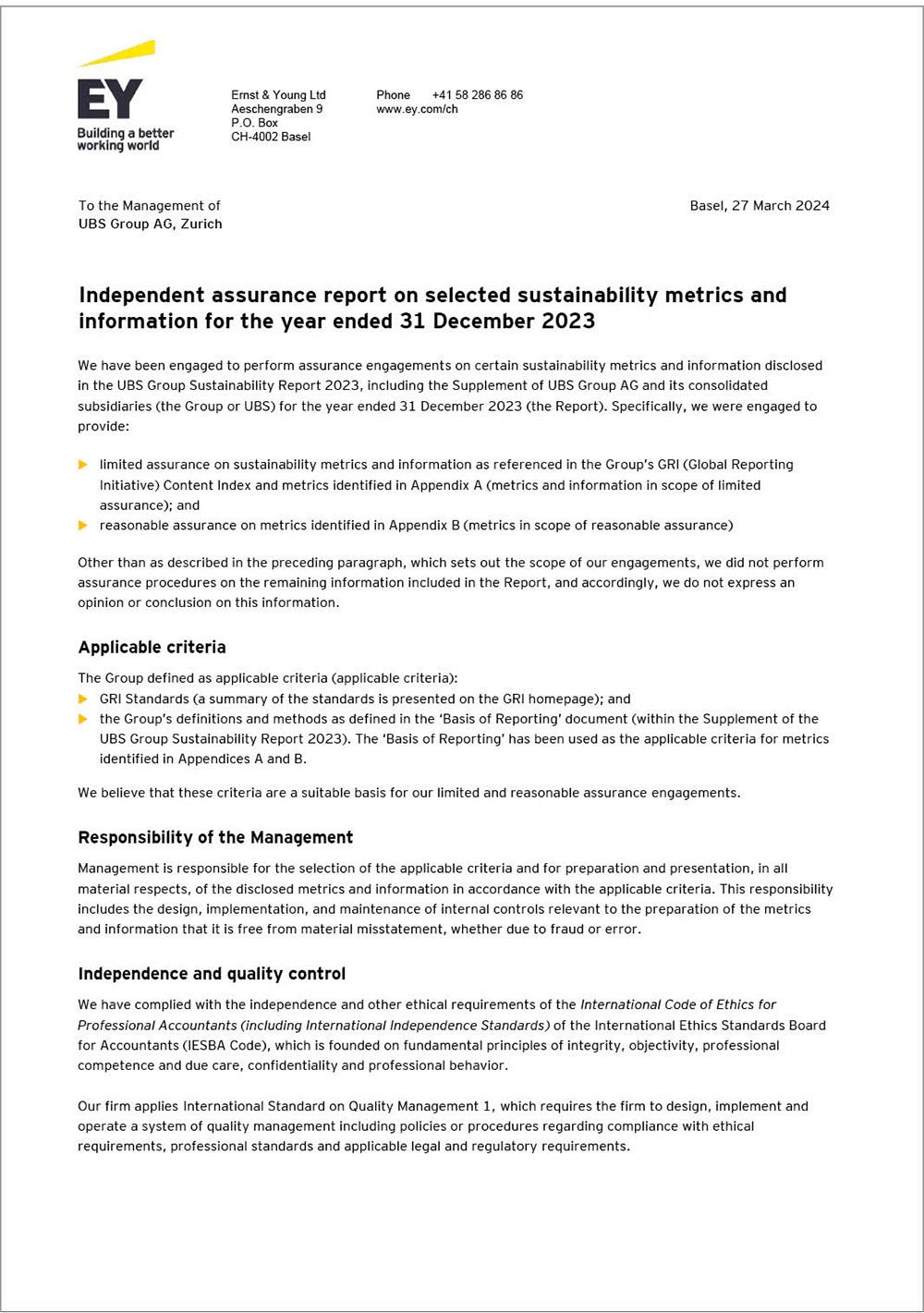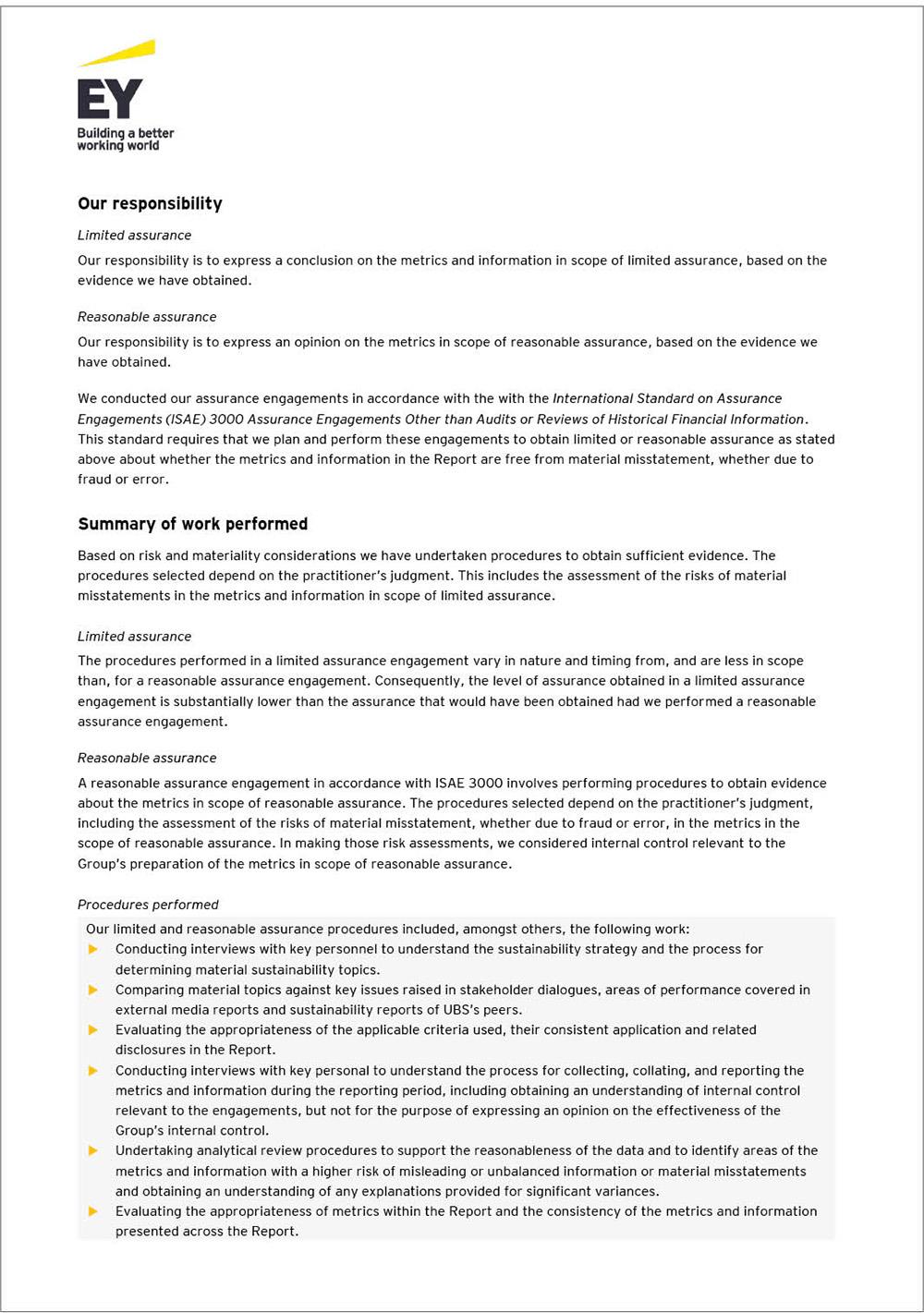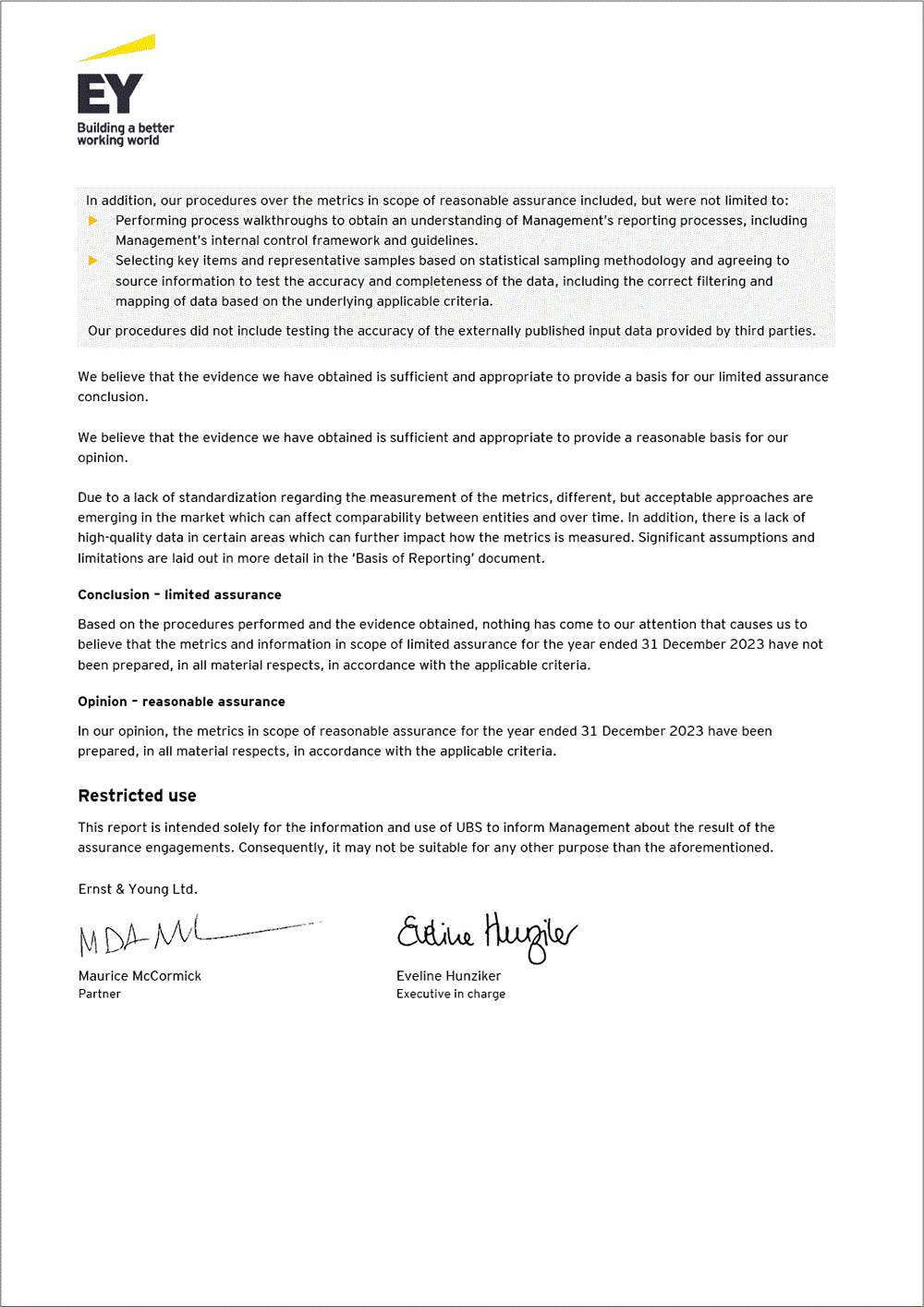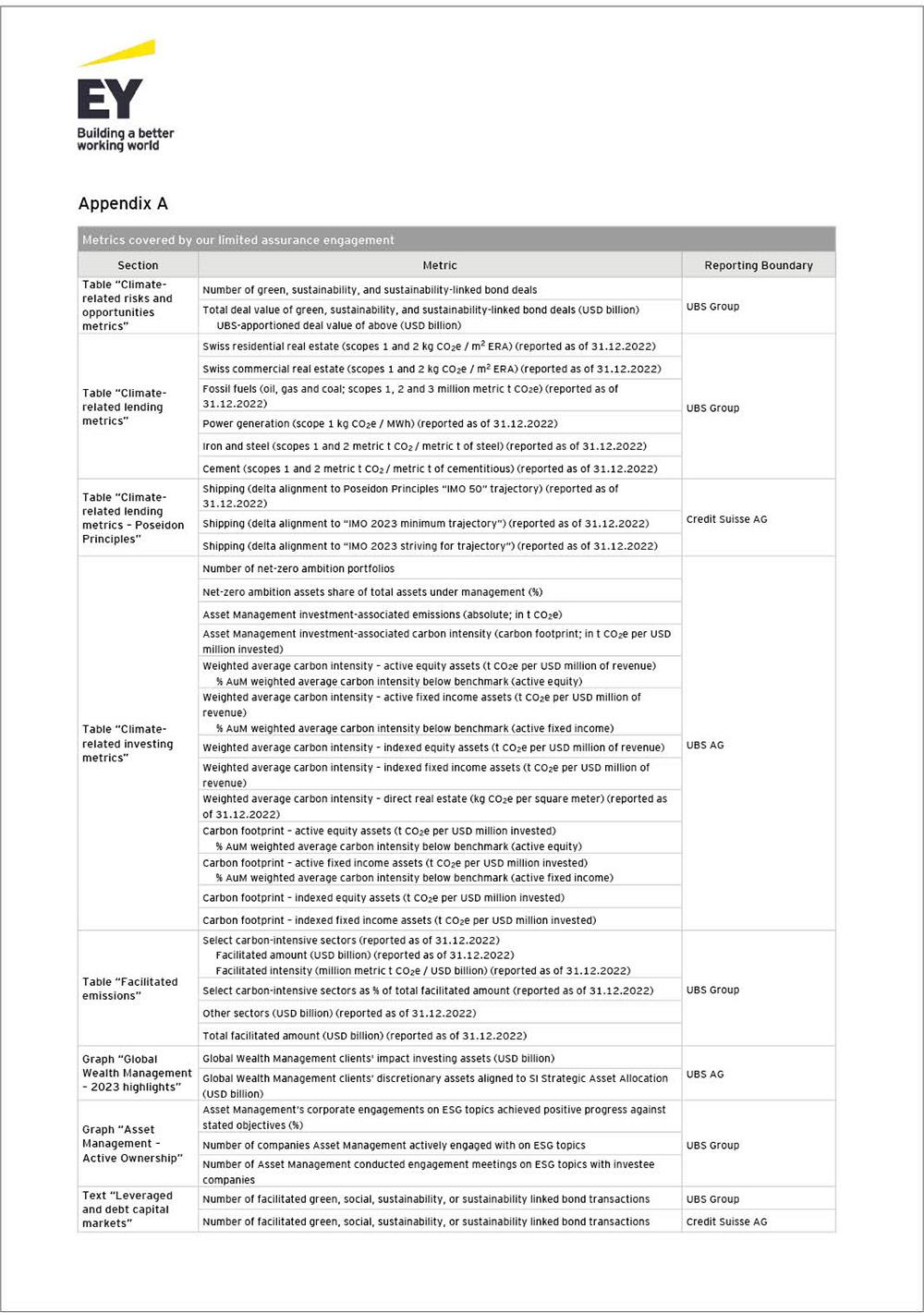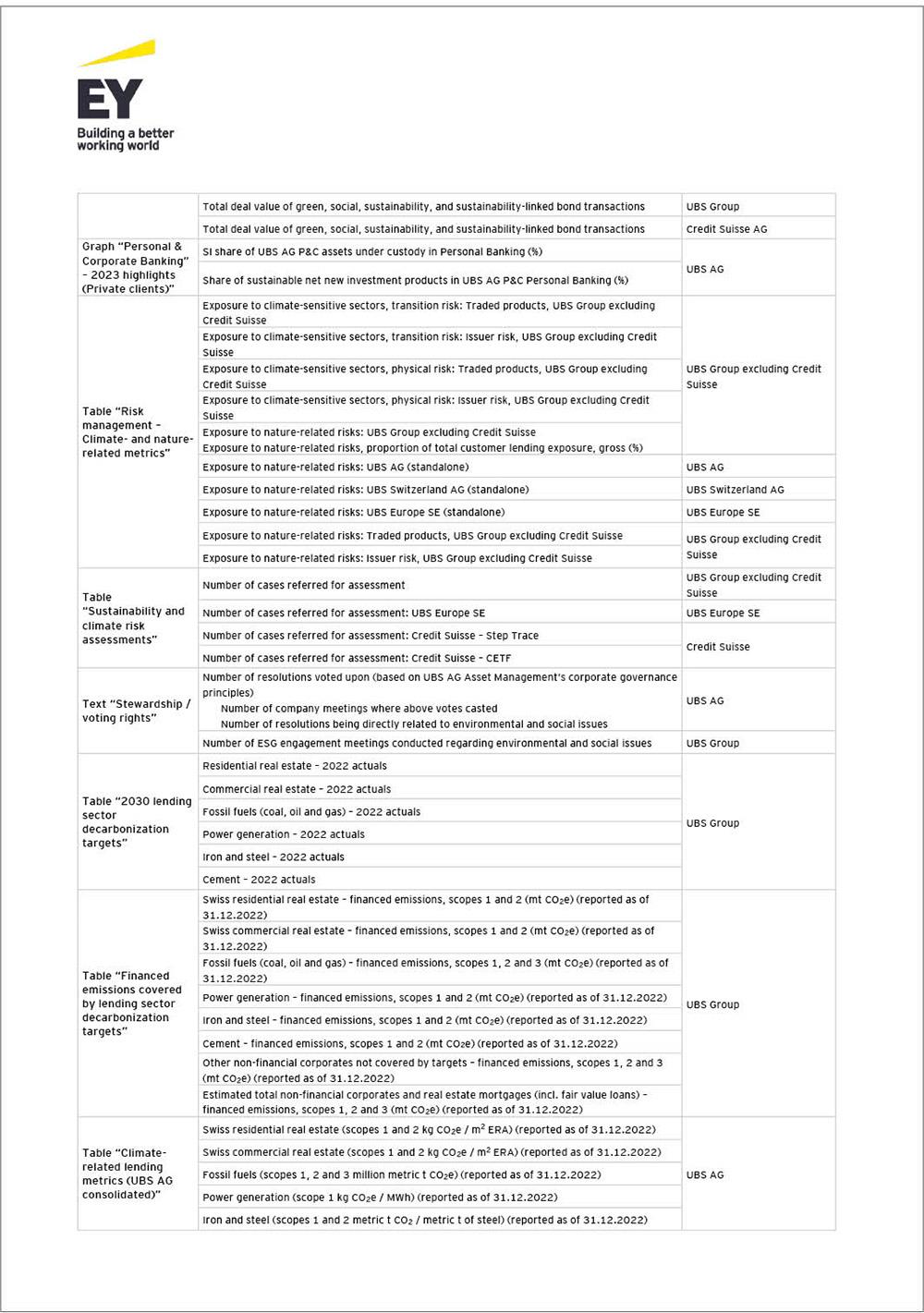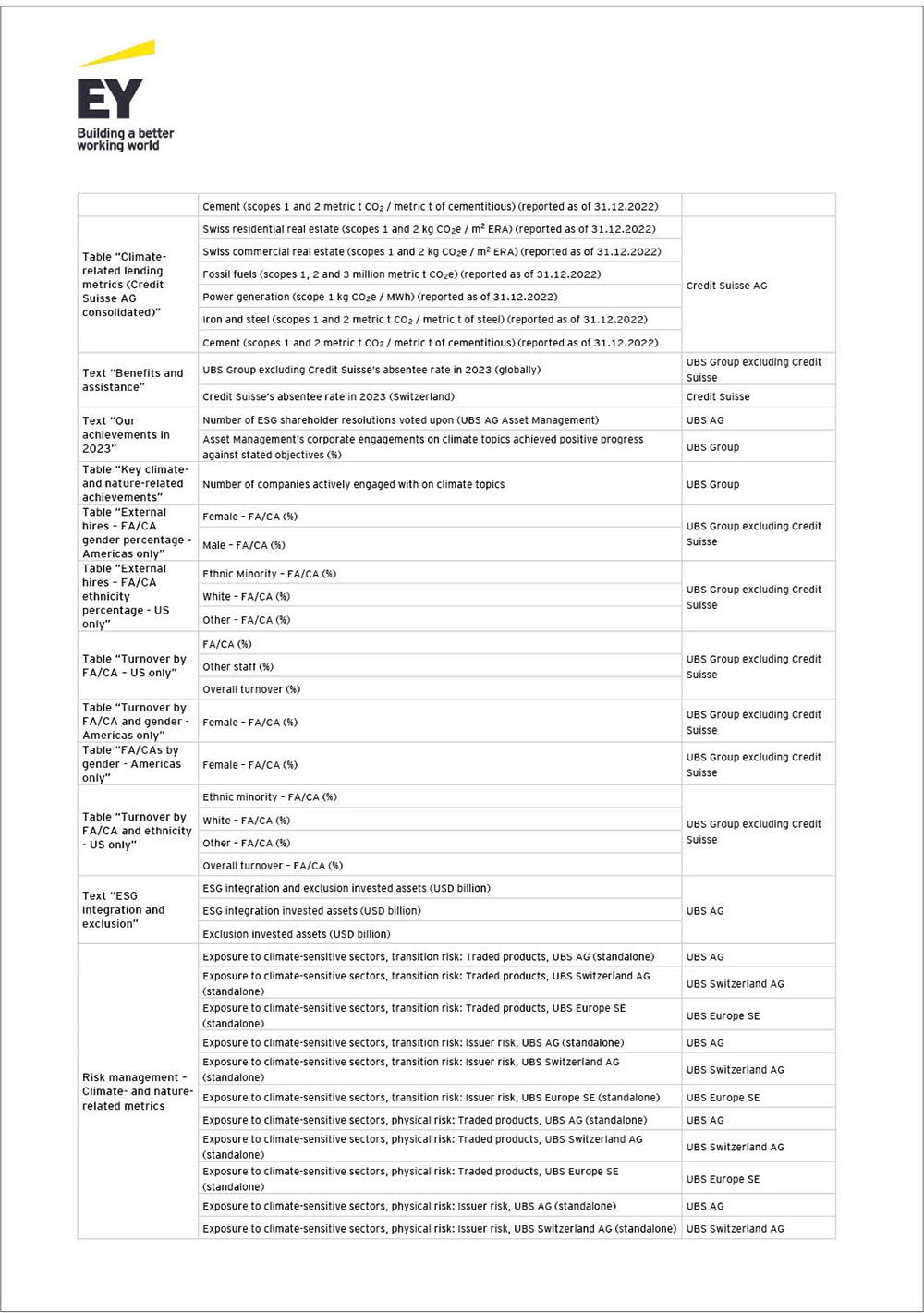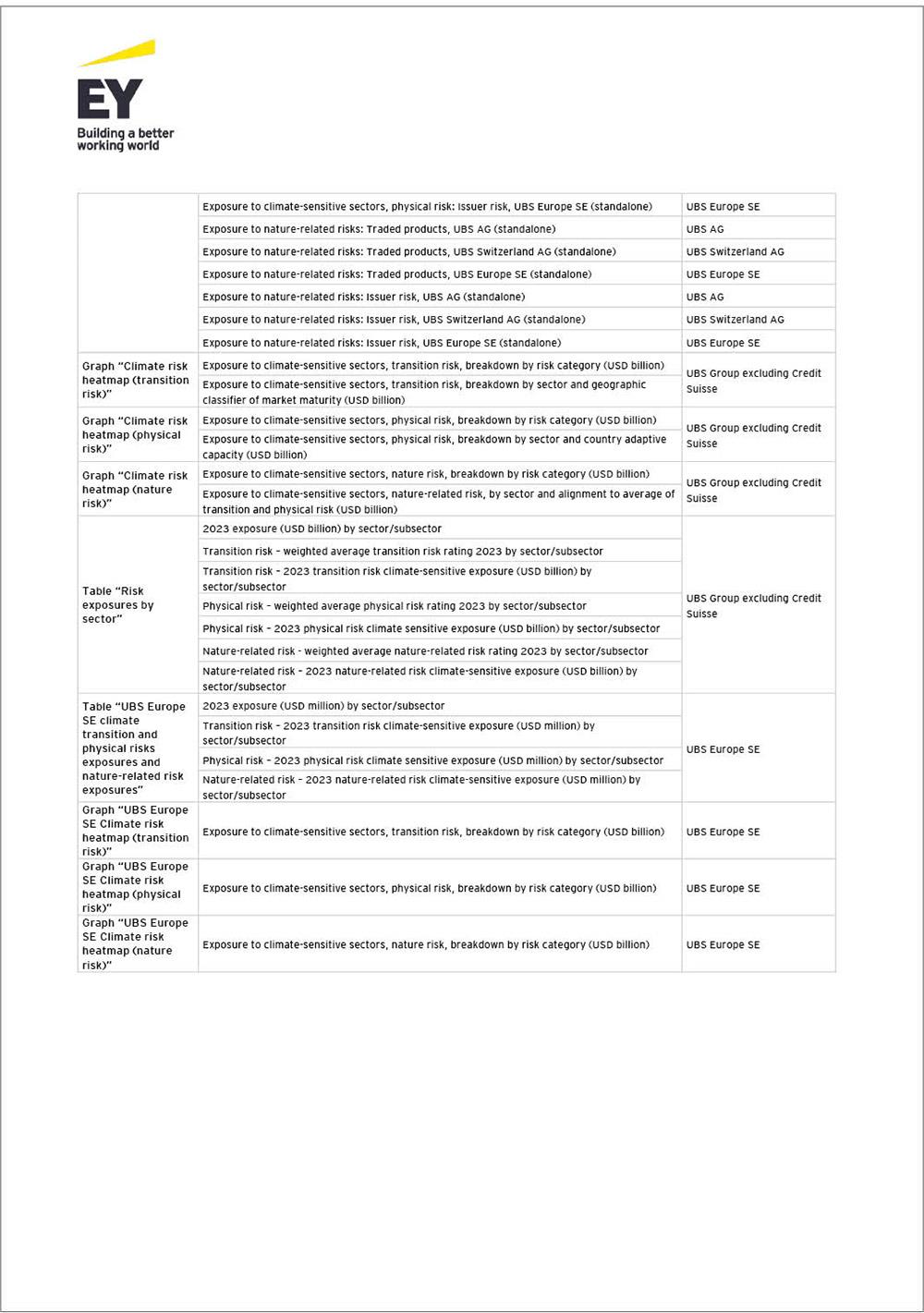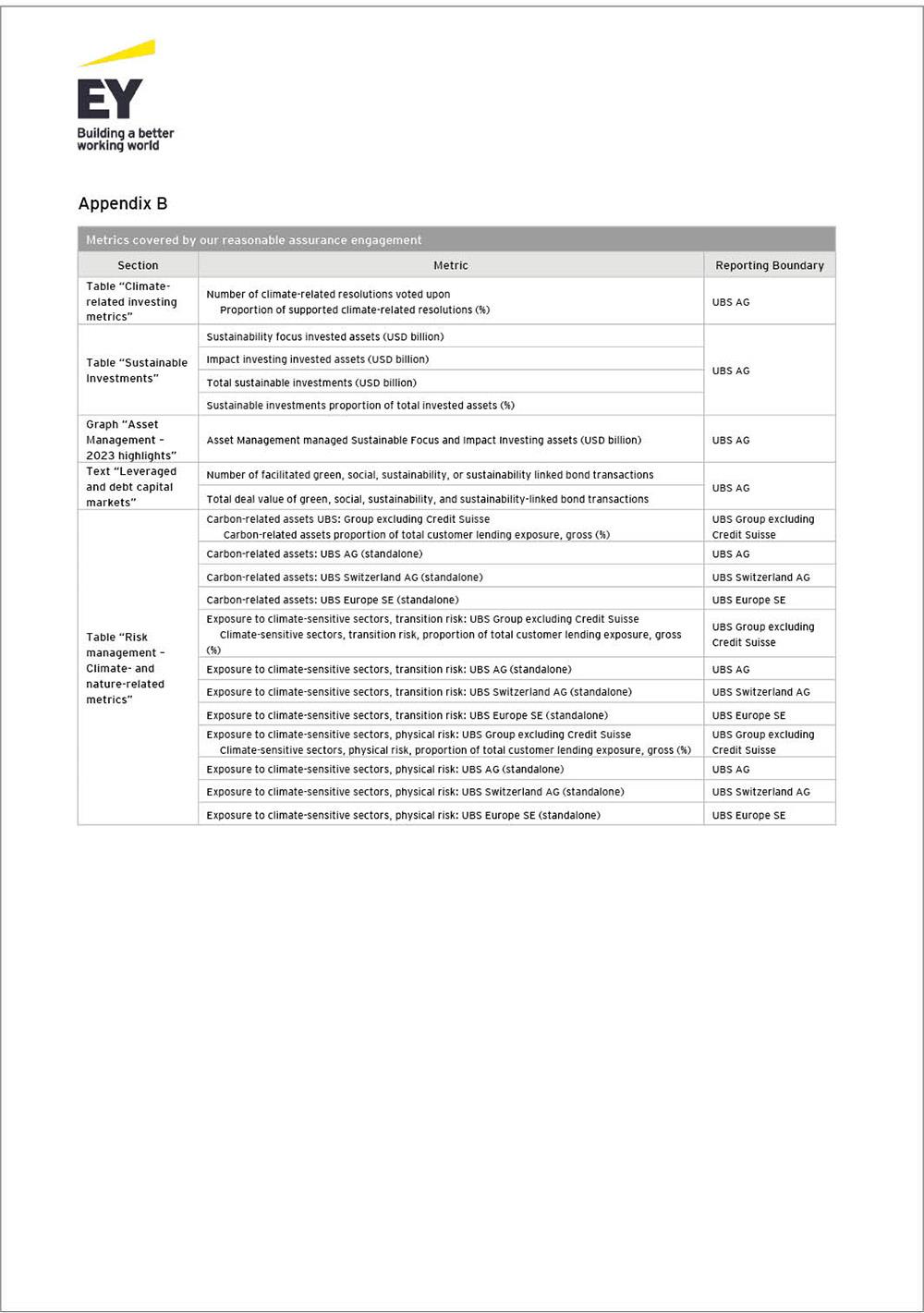Sustainability Report 2023
| Managing sustainability and climate risks
95
Market risk
(traded and
not traded)
Potential financial impacts to UBS from price
shifts and/or market volatility. A changing
physical environment (including climate
change) may affect the value of companies
reliant on the natural environment and/or
how the market perceives these companies.
The transition to a low-carbon economy
through climate policies, low-carbon
technologies, demand shifts and/or market
perception may also impact the value of
UBS’s positions and/or lead to a breakdown
in correlations between risk factors (e.g.,
prompting a change in market liquidity
and/or challenging assumptions in UBS’s
model).
In 2023, we assessed the risk from planned portfolios,
in line with our multi-year SCR
Initiative, and established solutions for integrating
climate and nature-related risks into
our market risk management framework. Progress on integrating
climate and nature-
related risks into our market risk management
was incrementally driven by
enhancing
analytical capacity, automating
UBS sector-level heatmaps in our market
risk
monitoring systems, and establishing
a
quantitative risk appetite.
Enhancing analytical capacity:
Leveraging existing sector-level heatmap
methodologies and our in-house scenario development
capacity, we sought to
perform a loss-driven materiality assessment.
By linking the risk ratings with adverse-
scenario-driven shocks, UBS was able to further
examine the correlations between risk
factors and understand the short-term loss potentials
for climate. For the first time in
2023, UBS was also able to review nature risk sensitivities,
following the introduction
of a nature risk heatmap.
Automation:
Market risks systems allow daily monitoring,
reporting and control. By
integrating these with our centralized climate
sector-level heatmaps, we are able to
understand and react to drivers of climate impacts
on our portfolios through the use
of a quantitative risk appetite for relevant portfolios.
Quantitative risk appetite:
For the relevant portfolios, climate risk concentration
triggers were introduced in 2023 based on the sector-level
climate risk heatmaps.
The
solution allows for daily monitoring of positions
that are considered inherently
sensitive to climate risks, including an automated
breach escalation process along with
the market risk escalation path for concentration
limits, providing an opportunity for
remediation actions. The triggers cover credit delta
and equity delta aggregated in
accordance with the “sensitivity,” as defined through the UBS heatmapping
Looking ahead to 2024 and beyond
, UBS is building the capacity to be able to
further differentiate risks at the company/issuer level.
Through the new “climate risk
rating model”,
UBS will incorporate third-party data with
an automated model to be
able to further establish company-level performance
against inherent risks defined
through the sector-level heatmap. We have also started to adapt UBS in-house
long-
term scenarios to the specifics of short-term
market risk analytical requirements.
Further adaptation
and implementation of this short-term perspective
of UBS’s adverse
climate scenario is expected for 2024.
The capabilities and processes currently established and under
development are also
being planned for expansion to the UBS global
market risk portfolios in 2024.
Liquidity risk
The potential impact on liquidity adequacy is
driven by risks from a changing physical
climate, the transition to a low-carbon
economy, or impacts and/or dependencies
on our natural environment (e.g.,
biodiversity, clean water, fresh air). Climate
events have been proven to affect funding
conditions, and therefore liquidity buffers
across broader banks (BCBS). Climate-
related risks are considered as an additional
driver of liquidity risk. As such, they may
impact our liquidity adequacy directly or
indirectly through our ability to raise funds,
liquidate assets and/or our customers’
demand for liquidity. This could result in net
cash outflows or depletion of our liquidity
In 2023, UBS enhanced its analytical capability
to assess the impact of climate shocks
on the liquidity position of planned portfolios,
in line with the multi-year SCR Initiative.
For the first time in 2023, UBS was also
able to review nature risk sensitivities,
following the introduction of a nature risk heatmap. As
part of the SCR Initiative, the
2023 climate and environmental assessment is being
developed further for global
rollout in the coming years,
2024 and 2025. In addition, a dedicated
Treasury Risk
Control team, focusing on sustainability and climate
risks, was established in Q3 2023
to support this work. The integration
of identified material climate-related risks into
the internal liquidity risk management framework
will be an iterative process as we
continuously improve the methodology, along with improving the availability and
quality of required data in the industry, and enhanced analytics and insights over
time.
Non-financial
risk (NFR)
Non-financial impact on UBS (compliance,
operational risk and financial crime) from
inadequate or failed internal processes,
people and systems and/or externally
due to
physical climate events or stakeholder legal
action
In 2023, we continued to integrate climate
considerations into the existing NFR
management framework. Specific climate risk
driver scenarios were defined for impact
on the exposure to taxonomy NFR, documented in
a consolidated Root Cause Library
to assess the completeness of controls against known
transmission channels. By the
end of 2023, 14 out of 18 taxonomies were assessed
(with a target to complete
across residual taxonomies by mid-2024). We also started to develop
a roadmap to
integrate climate-related considerations
into operational risk regulatory/economic
capital determination for inclusion in the GCRG
NFR measurement model governance
process with selective calibration applied initially to
Suitability and Product Lifecycle.
Given current strong capitalization, related ESG risks were assessed
as sufficiently and
inherently captured in their respective standalone capital exposures, but
GCRG will
continue to build on its modelling capabilities
by enhancing and expanding the risk
identification and materiality assessment to be
performed quantitatively across
relevant NFR categories and account for material
climate-related model dynamics.
Reputational
risk
Risk of an unfavorable perception,
or a
decline in UBS’s reputation,
from the point
of view of clients, industries, shareholders,
regulators, employees or the general public,
which may lead to potential financial losses
and/or loss of market share.
Risk is considered across all business
activities, transactions, and decisions.
We assessed the design of the reputational risk framework
to be generally robust in
terms of roles and responsibilities, escalation requirements, and
review and approval
authorities for sustainability-related risks. The reputational
risk dashboard now
captures the key risk indicators on a quarterly
basis, including metrics for financial
crime prevention, sustainability and climate risks,
client complaints, new business and
›
Refer to the “Supplement to Managing sustainability and climate risks” section of the Supplement to the UBS
Group Sustainability Report 2023, available at
ubs.com/sustainability-reporting
, for more information about our
vision for integrating sustainability and climate risks



